Accents, Groundcovers, Flowers, & Shrubs Catalog

Agapanthus
Also called African Lily or Lily of the Nile, this true lily is native to Africa. Produces clumps of long, shiny, strap-like leaves with spectacular flower clusters (6 to 12 in. across) which are white to dark blue in color. Blooms in late spring into the early fall and prefers full sun but can handle some afternoon shading. Flowers are fragrant which attract pollinating insects. Suitable for growing in the garden or as a potted house plant. Be careful handling this plant since it can cause irritation to the skin. Is moderately tolerant to frost.
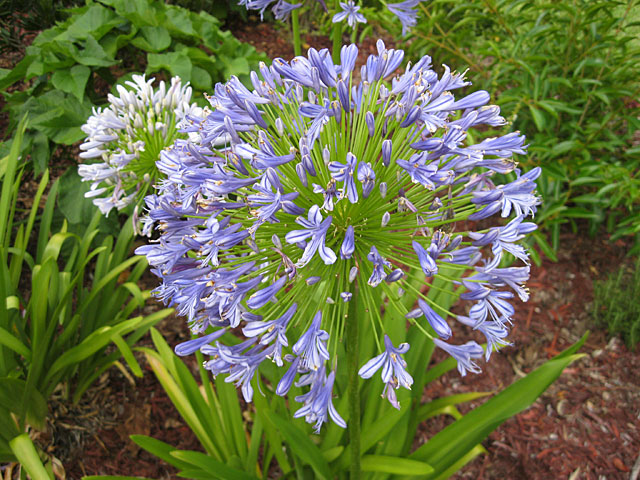
Agapanthus
Also called African Lily or Lily of the Nile, this true lily is native to Africa. Produces clumps of long, shiny, strap-like leaves with spectacular flower clusters (6 to 12 in. across) which are white to dark blue in color. Blooms in late spring into the early fall and prefers full sun but can handle some afternoon shading. Flowers are fragrant which attract pollinating insects. Suitable for growing in the garden or as a potted house plant. Be careful handling this plant since it can cause irritation to the skin. Is moderately tolerant to frost.
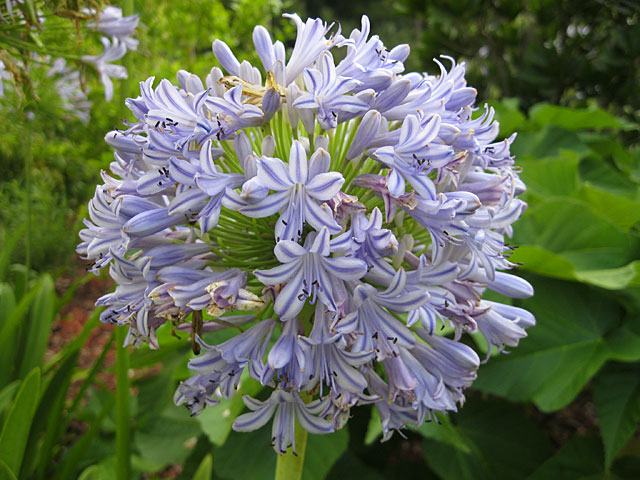
Agapanthus
Also called African Lily or Lily of the Nile, this true lily is native to Africa. Produces clumps of long, shiny, strap-like leaves with spectacular flower clusters (6 to 12 in. across) which are white to dark blue in color. Blooms in late spring into the early fall and prefers full sun but can handle some afternoon shading. Flowers are fragrant which attract pollinating insects. Suitable for growing in the garden or as a potted house plant. Be careful handling this plant since it can cause irritation to the skin. Is moderately tolerant to frost.
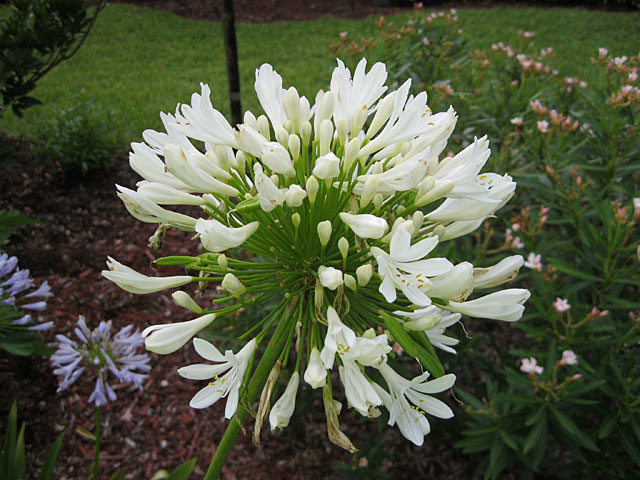
Agapanthus
Also called African Lily or Lily of the Nile, this true lily is native to Africa. Produces clumps of long, shiny, strap-like leaves with spectacular flower clusters (6 to 12 in. across) which are white to dark blue in color. Blooms in late spring into the early fall and prefers full sun but can handle some afternoon shading. Flowers are fragrant which attract pollinating insects. Suitable for growing in the garden or as a potted house plant. Be careful handling this plant since it can cause irritation to the skin. Is moderately tolerant to frost.
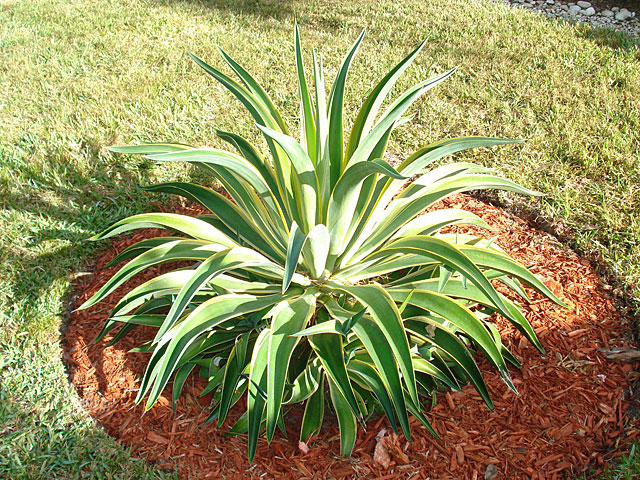
Agave-Caribbean Agave
Sometimes called the Century plant because of the length of time it requires to bloom (10 years plus). There are numerous varieties in the Agave family, some with very unusual leaf shapes, color variations and a wide array of growth habits from smaller stature to gigantic sizes. Flowering depends on the vigor of the individual plant, the richness of the soil and climate. Individual plants die after blooming but new plants (pups) which formed earlier will carry on the plant’s legacy. There are many species, some with vibrant colors, that will grab your eye in front yards and lawns. They like full sun but can tolerate some shade. Most varieties have thorns and some can have a bad bite with sharp barbs on the sides of the leaf and a wicked needle point an inch or more long at the tips. Certain varieties can be invasive, grow very large and live for many years. Many medicinal remedies are made from the juices of plants in this family as well as rope and Tequila from certain varieties. All varieties are highly drought tolerant and very cold hardy to South Florida.

Alternanthera
Native from Mexico to Argentina, A. ficoidea is a low-growing plant that typically grows on erect to procumbent stems to 6-12” tall. Species plants have elliptic to broad ovate green leaves (to 1” long). However it is the brightly colored cultivars that have become the popular garden plants, featuring green leaves blotched with yellow, orange, red, brown, copper or purple, sometimes with red veining. Foliage of the brighter colored cultivars is suggestive of coleus. White apetulous flowers appear stalkless or on short stalks in small axillary clusters in late fall to winter, but are insignificant. Flowers are usually observed in St. Louis only on houseplants or on container plants brought inside for overwintering. Plants in the genus Alternanthera have a rather large number of descriptive common names, including but not limited to Joseph’s coat, copperleaf, calico plant, bloodleaf, joyweed and parrot leaf, all in reference to the brilliantly colored leaves which provide foliage contrast to gardens and container plantings.

Arboricola
A evergreen shrub growing to 3-4 m tall, free-standing, or clinging to the trunks of other trees. The leaves are palmately compound, with 7-9 leaflets, the leaflets 9-20 cm long and 4-10 cm broad (though often smaller in cultivation). The flowers are produced in a 20 cm panicle of small umbels, each umbel 7-10 mm diameter with 5-10 flowers.
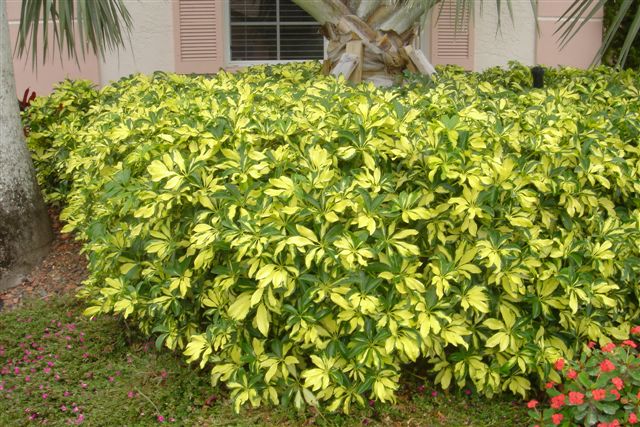
Arboricola - Veigated
A evergreen shrub growing to 3-4 m tall, free-standing, or clinging to the trunks of other trees. The leaves are palmately compound, with 7-9 leaflets, the leaflets 9-20 cm long and 4-10 cm broad (though often smaller in cultivation). The flowers are produced in a 20 cm panicle of small umbels, each umbel 7-10 mm diameter with 5-10 flowers.
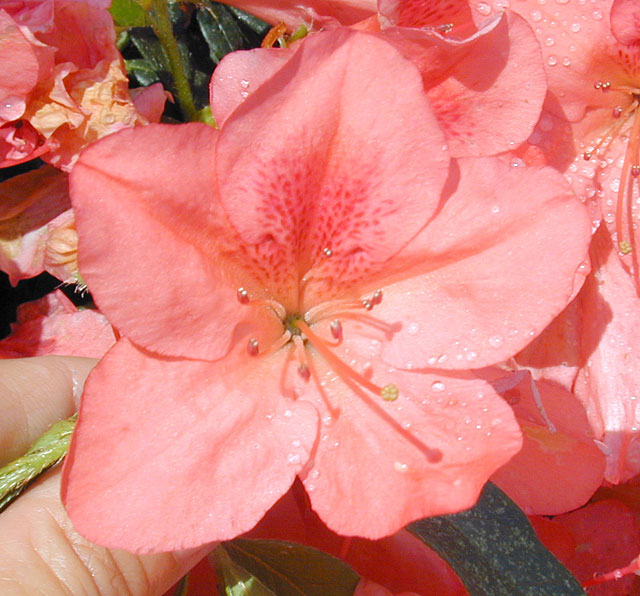
Azalea-DucDeRohan
A heat-tolerant Southern Indica Hybrid, this evergreen azalea bears showy clusters of salmon-pink flowers from late winter into spring. The funnel-shaped single blooms have a rose-pink central blotch. The compact rounded plants are densely furnished with handsome narrow dark green leaves.
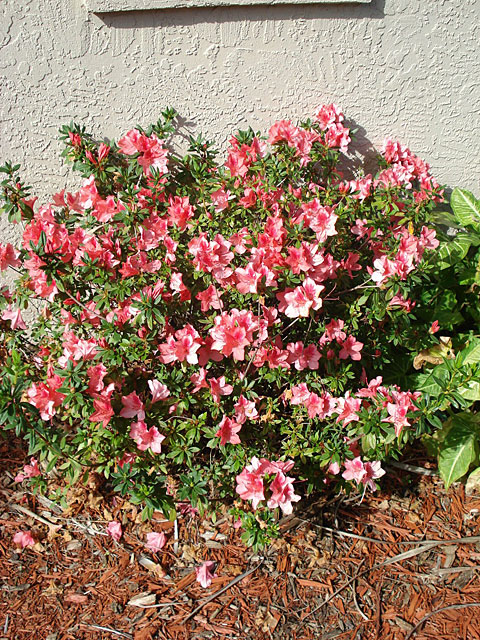
Azalea-Dutchess
A heat-tolerant Southern Indica Hybrid, this evergreen azalea bears showy clusters of salmon-pink flowers from late winter into spring. The funnel-shaped single blooms have a rose-pink central blotch. The compact rounded plants are densely furnished with handsome narrow dark green leaves.
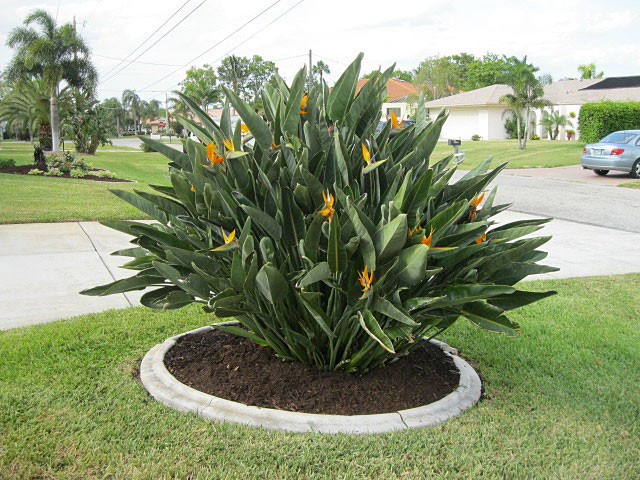
Bird of Paradise-Orange
Good-looking plant with thick, large dark green leaves and striking orange and blue blooms. It gets its name from the flower which resembles a brilliantly colored bird in flight. Cut flowers are often used in floral arrangements and are expensive since there are a limited number of blooms on each plant. Likes a well drained and sunny area for blooming purposes and should not be over watered. Flowers periodically through all the seasons and will bloom more often and more heavily when the right care and fertilizer are administered. Parts of the plant are poisonous if ingested. This is a tropical plant that will show damage to the leaves from frost or be severely hurt in a hard freeze. Try to cover in temperatures below 34˚F.
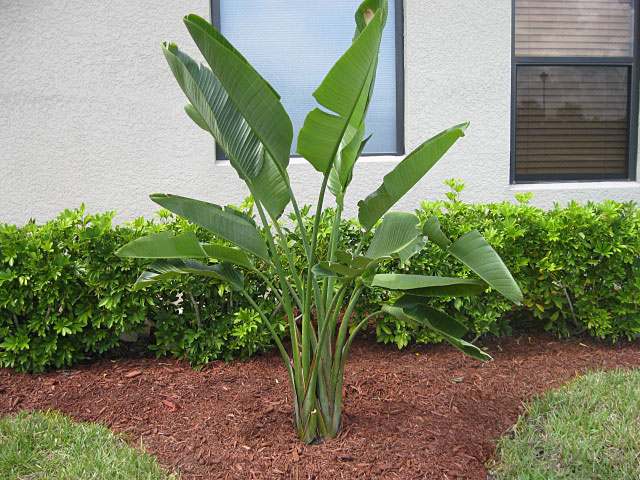
Bird of Paradise-White
Good-looking plant with thick, large dark green leaves and striking orange and blue blooms. It gets its name from the flower which resembles a brilliantly colored bird in flight. Cut flowers are often used in floral arrangements and are expensive since there are a limited number of blooms on each plant. Likes a well drained and sunny area for blooming purposes and should not be over watered. Flowers periodically through all the seasons and will bloom more often and more heavily when the right care and fertilizer are administered. Parts of the plant are poisonous if ingested. This is a tropical plant that will show damage to the leaves from frost or be severely hurt in a hard freeze. Try to cover in temperatures below 34˚F.
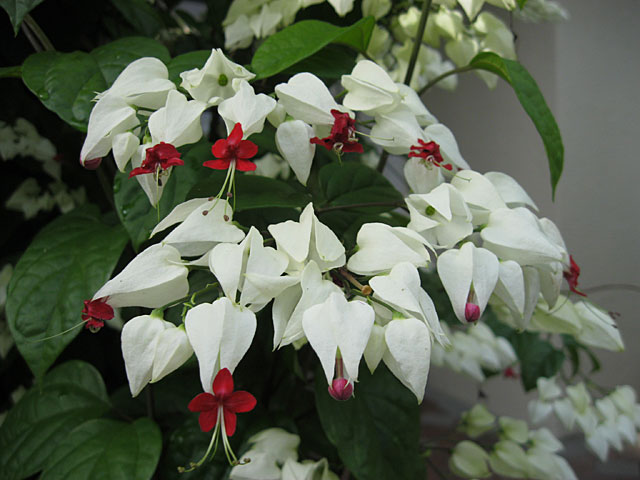
Bleeding Heart Vine
Bleeding Heart Vine is a beautiful twining, tropical vine plant; there are over 400 different species of this plant. There are tree and bush varieties, as well as climbing vines and more. These are summer flowers that originate in the warm climates of West Africa.
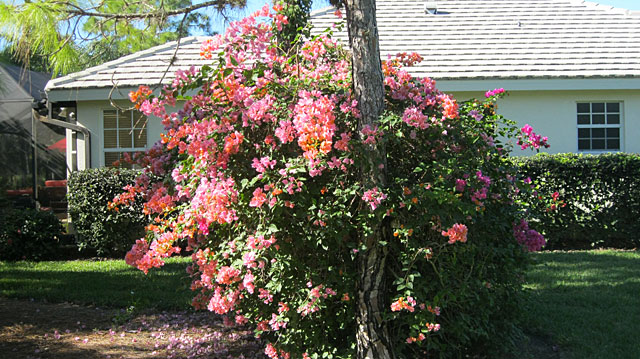
Bougainvillea-After Glow
Bougainvillea are one of our most popular tropical plants here in South Florida due to their explosive color variations. They love the warm and sunny climate and are quite easy to grow. All varieties are especially drought tolerant, should not be over watered and actually prefer a well drained, dry situation. They can grow in almost any soil type and are fast growers. Use them to decorate fences, trellises, arbors or espalier on large walls. This versatile plant comes in many eye-popping colors like; Red, Purple, Orange, Apricot, White, Pink or Yellow and additionally comes in bicolor. They can also be used as a ground cover, standard single trunk tree, in hanging baskets or in ornamental planters for a cascading effect. Makes an excellent vine for decorating patios and plazas! However, most varieties have sharp thorns so use due care when trimming or moving this prolific grower. Every couple months when plants are through with a blooming cycle they need to be trimmed back and fertilized to bring on a new robust set of bracts (blooms). This plant is sensitive to freezing temperatures. Cold damage from frost or wind-chill can burn leaves or cause leaves to turn yellow then brown and shed. So try to protect or cover when needed.
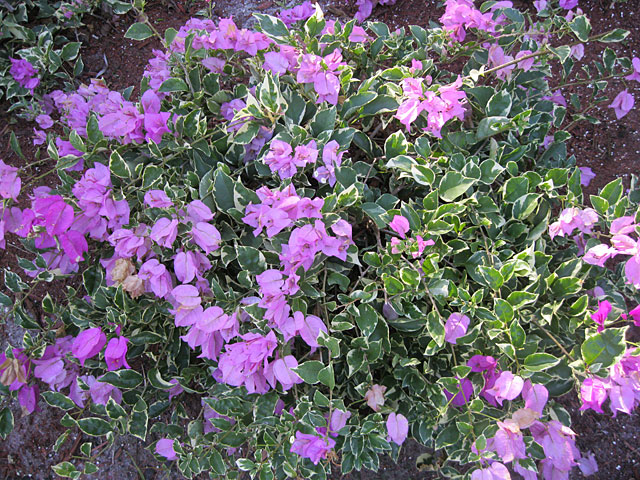
Bougainvillea-Blueberry Ice
Bougainvillea are one of our most popular tropical plants here in South Florida due to their explosive color variations. They love the warm and sunny climate and are quite easy to grow. All varieties are especially drought tolerant, should not be over watered and actually prefer a well drained, dry situation. They can grow in almost any soil type and are fast growers. Use them to decorate fences, trellises, arbors or espalier on large walls. This versatile plant comes in many eye-popping colors like; Red, Purple, Orange, Apricot, White, Pink or Yellow and additionally comes in bicolor. They can also be used as a ground cover, standard single trunk tree, in hanging baskets or in ornamental planters for a cascading effect. Makes an excellent vine for decorating patios and plazas! However, most varieties have sharp thorns so use due care when trimming or moving this prolific grower. Every couple months when plants are through with a blooming cycle they need to be trimmed back and fertilized to bring on a new robust set of bracts (blooms). This plant is sensitive to freezing temperatures. Cold damage from frost or wind-chill can burn leaves or cause leaves to turn yellow then brown and shed. So try to protect or cover when needed.
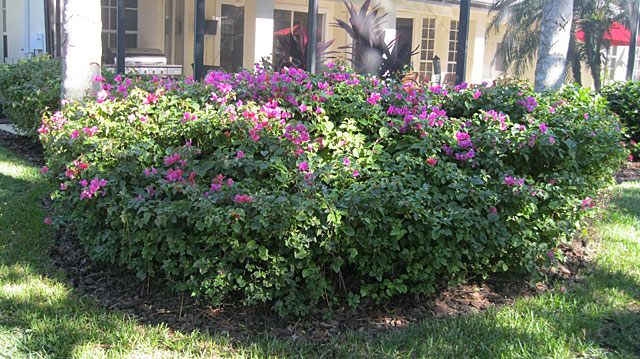
Bougainvillea-Helen Johnson
Bougainvillea are one of our most popular tropical plants here in South Florida due to their explosive color variations. They love the warm and sunny climate and are quite easy to grow. All varieties are especially drought tolerant, should not be over watered and actually prefer a well drained, dry situation. They can grow in almost any soil type and are fast growers. Use them to decorate fences, trellises, arbors or espalier on large walls. This versatile plant comes in many eye-popping colors like; Red, Purple, Orange, Apricot, White, Pink or Yellow and additionally comes in bicolor. They can also be used as a ground cover, standard single trunk tree, in hanging baskets or in ornamental planters for a cascading effect. Makes an excellent vine for decorating patios and plazas! However, most varieties have sharp thorns so use due care when trimming or moving this prolific grower. Every couple months when plants are through with a blooming cycle they need to be trimmed back and fertilized to bring on a new robust set of bracts (blooms). This plant is sensitive to freezing temperatures. Cold damage from frost or wind-chill can burn leaves or cause leaves to turn yellow then brown and shed. So try to protect or cover when needed.
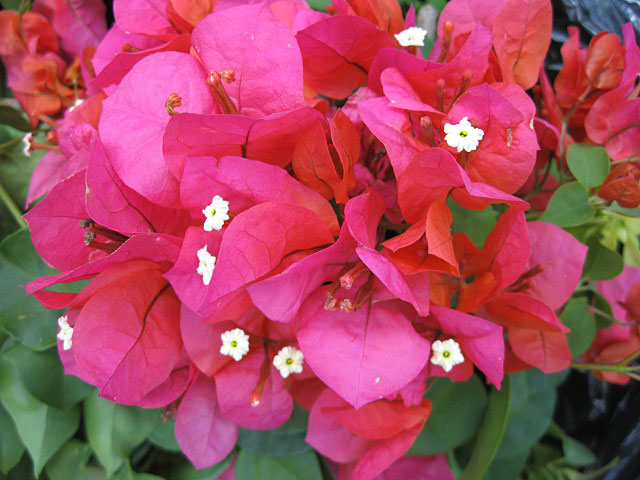
Bougainvillea-James Walker
Bougainvillea are one of our most popular tropical plants here in South Florida due to their explosive color variations. They love the warm and sunny climate and are quite easy to grow. All varieties are especially drought tolerant, should not be over watered and actually prefer a well drained, dry situation. They can grow in almost any soil type and are fast growers. Use them to decorate fences, trellises, arbors or espalier on large walls. This versatile plant comes in many eye-popping colors like; Red, Purple, Orange, Apricot, White, Pink or Yellow and additionally comes in bicolor. They can also be used as a ground cover, standard single trunk tree, in hanging baskets or in ornamental planters for a cascading effect. Makes an excellent vine for decorating patios and plazas! However, most varieties have sharp thorns so use due care when trimming or moving this prolific grower. Every couple months when plants are through with a blooming cycle they need to be trimmed back and fertilized to bring on a new robust set of bracts (blooms). This plant is sensitive to freezing temperatures. Cold damage from frost or wind-chill can burn leaves or cause leaves to turn yellow then brown and shed. So try to protect or cover when needed.
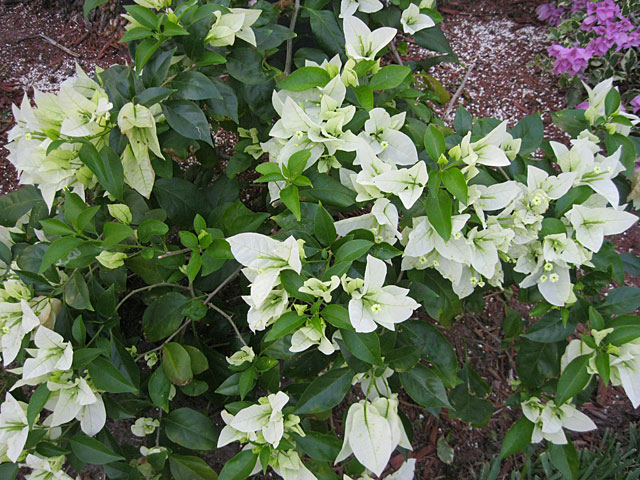
Bougainvillea-Miss Alice
Bougainvillea are one of our most popular tropical plants here in South Florida due to their explosive color variations. They love the warm and sunny climate and are quite easy to grow. All varieties are especially drought tolerant, should not be over watered and actually prefer a well drained, dry situation. They can grow in almost any soil type and are fast growers. Use them to decorate fences, trellises, arbors or espalier on large walls. This versatile plant comes in many eye-popping colors like; Red, Purple, Orange, Apricot, White, Pink or Yellow and additionally comes in bicolor. They can also be used as a ground cover, standard single trunk tree, in hanging baskets or in ornamental planters for a cascading effect. Makes an excellent vine for decorating patios and plazas! However, most varieties have sharp thorns so use due care when trimming or moving this prolific grower. Every couple months when plants are through with a blooming cycle they need to be trimmed back and fertilized to bring on a new robust set of bracts (blooms). This plant is sensitive to freezing temperatures. Cold damage from frost or wind-chill can burn leaves or cause leaves to turn yellow then brown and shed. So try to protect or cover when needed.
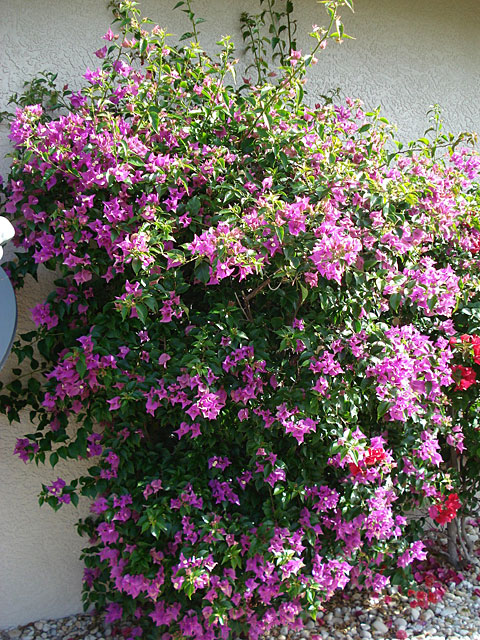
Bougainvillea-New River
Bougainvillea are one of our most popular tropical plants here in South Florida due to their explosive color variations. They love the warm and sunny climate and are quite easy to grow. All varieties are especially drought tolerant, should not be over watered and actually prefer a well drained, dry situation. They can grow in almost any soil type and are fast growers. Use them to decorate fences, trellises, arbors or espalier on large walls. This versatile plant comes in many eye-popping colors like; Red, Purple, Orange, Apricot, White, Pink or Yellow and additionally comes in bicolor. They can also be used as a ground cover, standard single trunk tree, in hanging baskets or in ornamental planters for a cascading effect. Makes an excellent vine for decorating patios and plazas! However, most varieties have sharp thorns so use due care when trimming or moving this prolific grower. Every couple months when plants are through with a blooming cycle they need to be trimmed back and fertilized to bring on a new robust set of bracts (blooms). This plant is sensitive to freezing temperatures. Cold damage from frost or wind-chill can burn leaves or cause leaves to turn yellow then brown and shed. So try to protect or cover when needed.
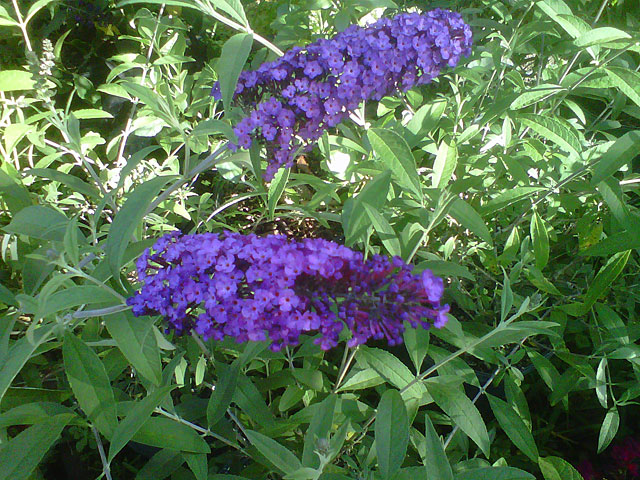
Buddleia-Midnight Blue
There are many cultivars of Buddleia, and exact plant characteristics will vary. Growing conditions will also have an impact on the plant's mature size. But generally speaking, Buddleia can get 6'-12' tall and have a spread of 4'-15'. Blooms on the plants can be purple, pink, white, or red, and they usually have an orange throat in the center. Buddleia plants will bloom throughout the summer. Leaves are lance-shaped and grayish-green on their undersides.
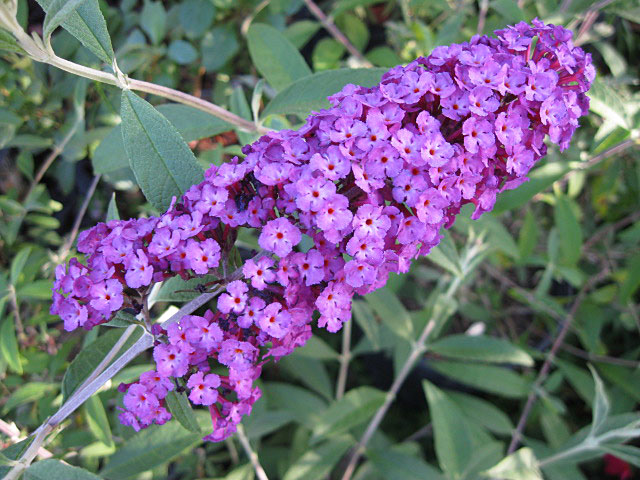
Buddleia-Purple
There are many cultivars of Buddleia, and exact plant characteristics will vary. Growing conditions will also have an impact on the plant's mature size. But generally speaking, Buddleia can get 6'-12' tall and have a spread of 4'-15'. Blooms on the plants can be purple, pink, white, or red, and they usually have an orange throat in the center. Buddleia plants will bloom throughout the summer. Leaves are lance-shaped and grayish-green on their undersides.
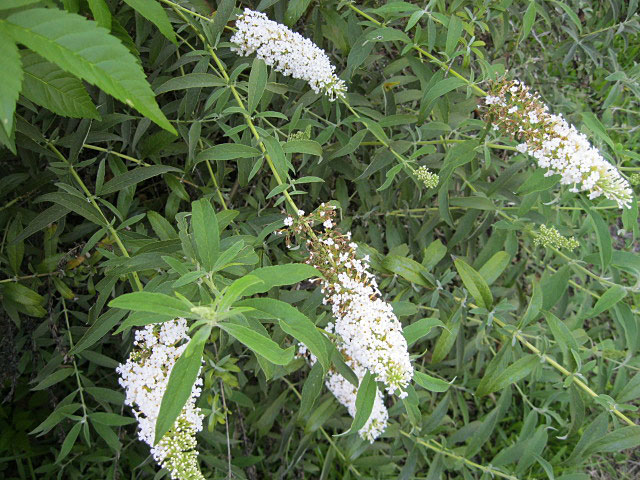
Buddleia-White
There are many cultivars of Buddleia, and exact plant characteristics will vary. Growing conditions will also have an impact on the plant's mature size. But generally speaking, Buddleia can get 6'-12' tall and have a spread of 4'-15'. Blooms on the plants can be purple, pink, white, or red, and they usually have an orange throat in the center. Buddleia plants will bloom throughout the summer. Leaves are lance-shaped and grayish-green on their undersides.

Bush Daisy
Yellow Bush Daisy, or African Yellow Daisy is a marvelous addition to any garden that has a well-drained, full sun situation. This is a plant that provides sunny, yellow daisy-like flower color against a mat of appealing finely cut green or grey-green foliage all season long to some degree (it does not flower as much in very hot conditions, but there will still be a few blooms).
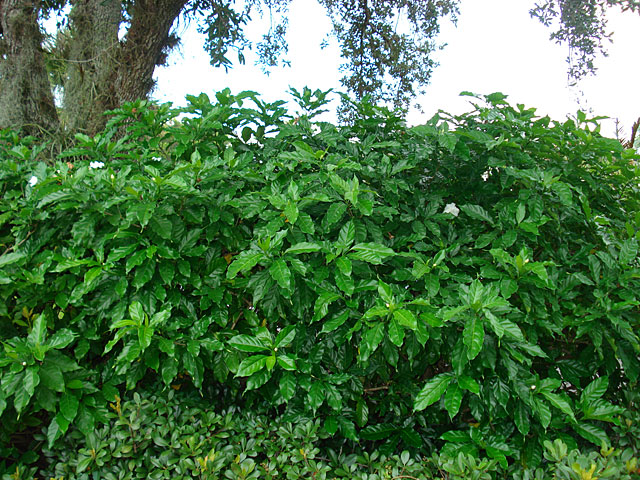
Cape Jasmine
A fragrant flowering evergreen tropical plant, a favorite in gardens worldwide. It originated in Asia and is most commonly found growing in Vietnam, Southern China, Taiwan, Japan and India. With its shiny green leaves and fragrant white summer flowers, it is widely used in gardens in warm temperate and subtropical climates. It has been in cultivation in China for at least a thousand years, and was introduced to English gardens in the mid 18th century. Many varieties have been bred for horticulture, with low growing, and large- and long flowering forms.
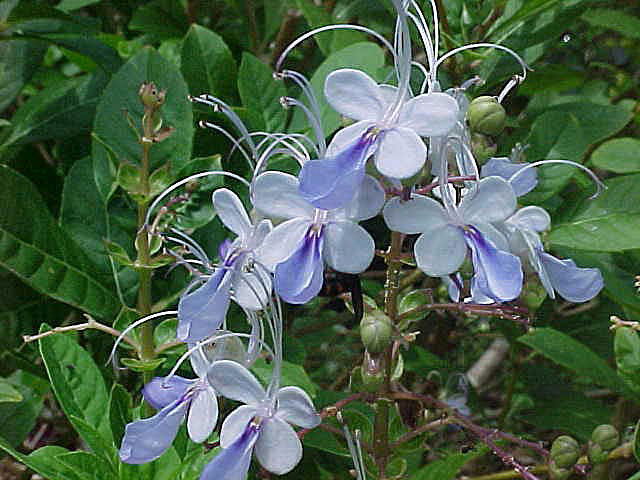
Clerodendrum-Ugandense
The beauty of blue butterfly wings is seen year-round in this everblooming species. This Butterfly Flower displays panicles of French and marine blue flowers in a 2’-4’ upright shrub that is captivating in its beauty. Use Butterfly Flower as a small stand-alone specimen or in a mixed border.
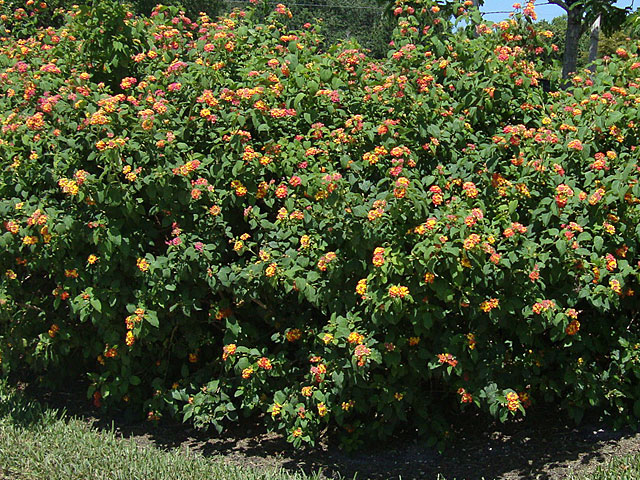
Confetti Lantana
This is a shrub-type Lantana that can get 2-3' in height with a 6-8' spread. The blooms are tri-colored consisting of yellow, pink, and purple to wine colors that will fade with age and are great for attracting butterflies. Confettii Lantana will bloom late spring to fall and has an upright growth habit. The foliage is very aromatic and can irritate the skin of some people. Confetti Lantana should be spaced every 24-36 inches when planting.
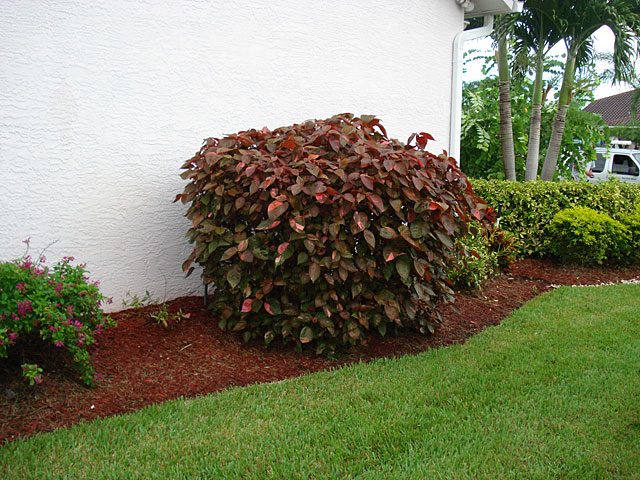
Copperleaf
This fast growing variegated shrub has awesome color year round due to brightly highlighted copper and reddish leaves. Related to the Chenille Plant it is used as a hedge plant, in group plantings, as a single accent plant and indoors as a potted plant. There are numerous varieties, some with leaves larger than your hand, some with green and cream colored foliage and dwarf ones with narrow drooping leaves. They like a well drained, rich, moist soil with regular watering but not constantly saturated. Does good in partial shade or as an indoor potted plant but colors are the most vibrant in full sun. This tropical shrub does not like freezing temperatures and will show leaf burn if subjected to any frost.
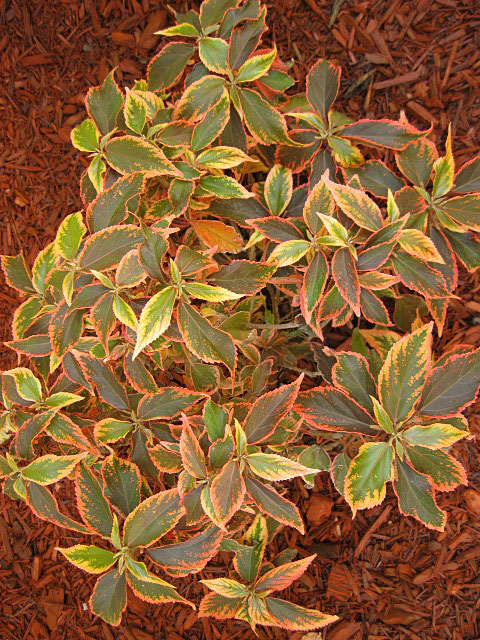
Copperleaf-Dwarf
This fast growing variegated shrub has awesome color year round due to brightly highlighted copper and reddish leaves. Related to the Chenille Plant it is used as a hedge plant, in group plantings, as a single accent plant and indoors as a potted plant. There are numerous varieties, some with leaves larger than your hand, some with green and cream colored foliage and dwarf ones with narrow drooping leaves. They like a well drained, rich, moist soil with regular watering but not constantly saturated. Does good in partial shade or as an indoor potted plant but colors are the most vibrant in full sun. This tropical shrub does not like freezing temperatures and will show leaf burn if subjected to any frost.
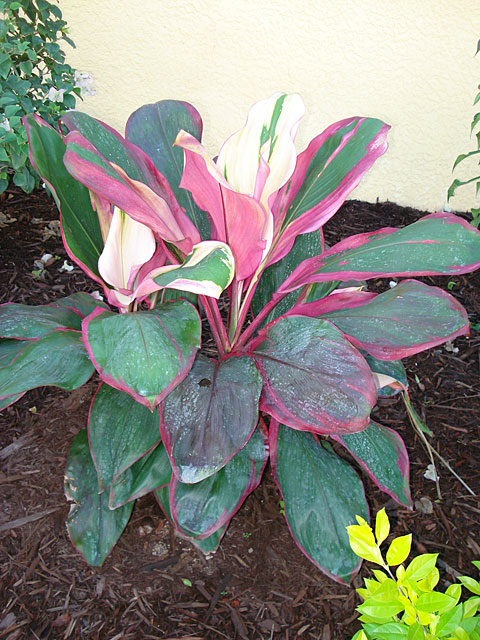
Cordyline-Bolero
Lush large broad green leaves 2' to 3' long and 6 inches to 8inche wide. Native Hawaiians foster a strong belief that growing Ti plants around the home protects and brings good luck to the home. Ti's can grow to a height of 10' but are slow growing. They prefer more shade than sun, which keeps the leaves a darker green. The leaves have many useful purposes where the leaves are used for cooking and fashioned into hula skirts for Polynesian dancers among other uses. Cut off sections of cane will sprout new plants if planted in well drained soil and moderate water. Very lush tropical!
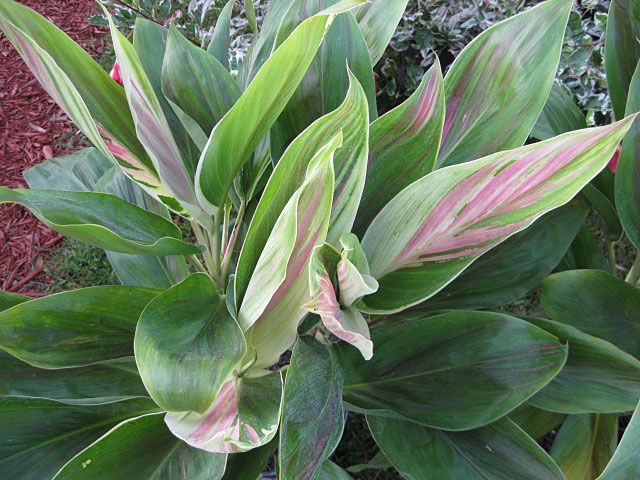
Cordyline-Kiwi
Lush large broad green leaves 2' to 3' long and 6 inches to 8inche wide. Native Hawaiians foster a strong belief that growing Ti plants around the home protects and brings good luck to the home. Ti's can grow to a height of 10' but are slow growing. They prefer more shade than sun, which keeps the leaves a darker green. The leaves have many useful purposes where the leaves are used for cooking and fashioned into hula skirts for Polynesian dancers among other uses. Cut off sections of cane will sprout new plants if planted in well drained soil and moderate water. Very lush tropical!
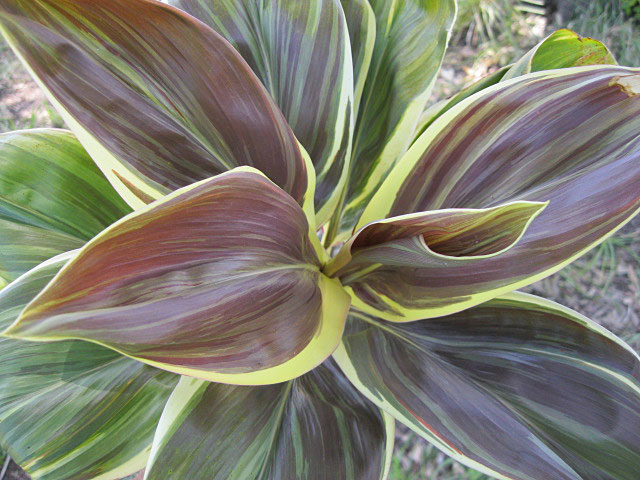
Cordyline-Mocha Latte
Lush large broad green leaves 2' to 3' long and 6 inches to 8inche wide. Native Hawaiians foster a strong belief that growing Ti plants around the home protects and brings good luck to the home. Ti's can grow to a height of 10' but are slow growing. They prefer more shade than sun, which keeps the leaves a darker green. The leaves have many useful purposes where the leaves are used for cooking and fashioned into hula skirts for Polynesian dancers among other uses. Cut off sections of cane will sprout new plants if planted in well drained soil and moderate water. Very lush tropical!
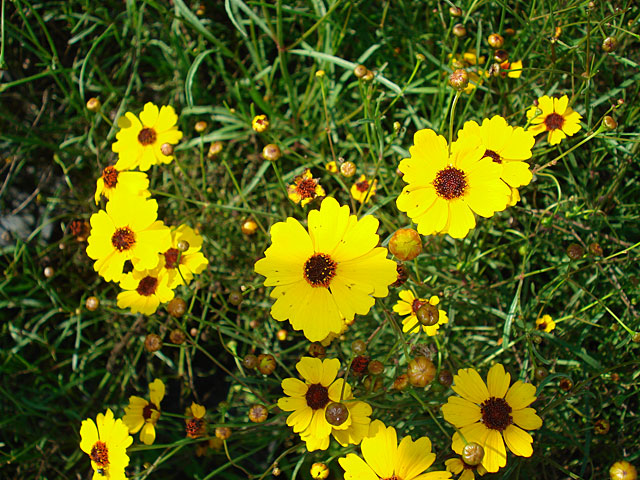
Coreopsis
Coreopsis is tolerant of a variety of soil types and environmental conditions, making it a popular choice for home gardeners. Tall varieties can reach 4 feet in height and are good for the back of the border and in cutting gardens. Shorter, mounding varieties are more delicate and good for edging. Most coreopsis sport yellow flowers, although a pink variety is also available.

Cosmos
Cosmos flowers are produced in a capitulum. Cosmos flower Capitulum is surrounded by a ring of broad ray florets and a center of disc florets. There is a lot of color variation in between the species. Cosmos flowers are 2-4 inches in diameter. Cosmos flowers come in brightly colored single or double flowers which include white, pink, orange, yellow, and scarlet colors.
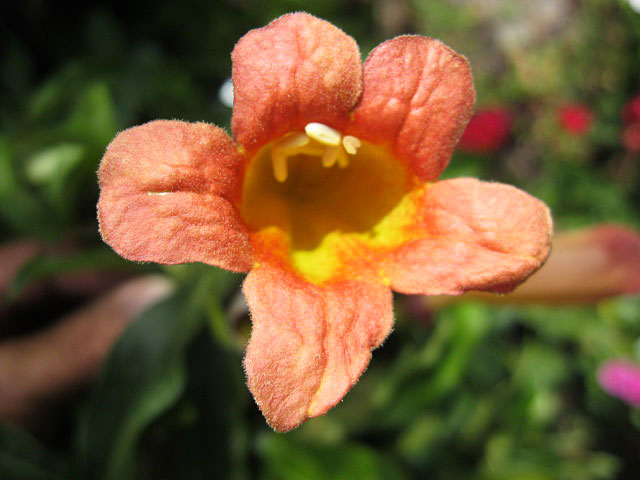
Crossvine-Bignonia Capreolata
A woody vine with large trumpet-shaped flowers that are dull red or orange on the outside and yellow or red inside. Crossvine may climb to a height of 20 to 40 feet or may trail along the ground where no support is present. Crossvine occurs primarily in woods, fence rows, and roadsides in the piedmont and coastal plain regions of the southeastern United States.
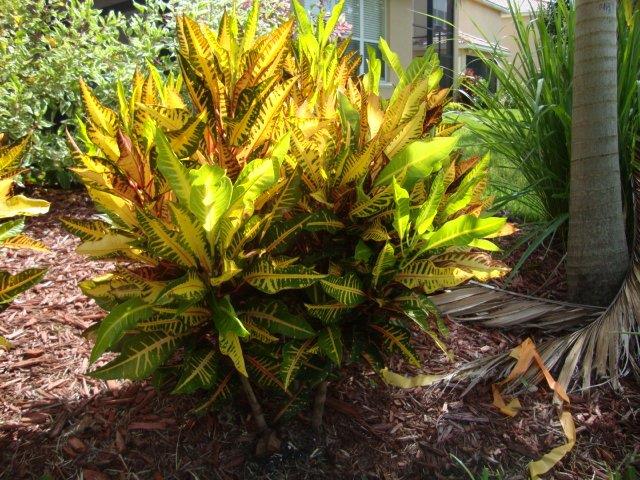
Croton - AFD
There are literally hundreds of named varieties in this group which portray unusual leaf shapes and wild mixtures of vivid colors beyond imagination. They make a fabulous addition to tropical landscapes and mix great with ferns, bromeliads, palms and others plants that have similar water and light requirements. Crotons don’t have a significant bloom but the eye-popping mixed colors of the leaf are the real attraction. They are drought tolerant once established, like a well drained soil and should not be over watered. While most varieties do great in shade, be sure to plant them in the right location since some do well in full sun while others do not like hot, all day sun and will bleach out. Some varieties are semi-dwarf and others get quite large so space in the landscape is important. Some of our inventory includes: (Bravo, Buddy, Mammey, Gold Dust, Stoplight for full sun or partial shade) (Icetone, Oakleaf, Petra for partial shade or darker shade). All varieties can receive significant damage in frost or freezing temperatures.
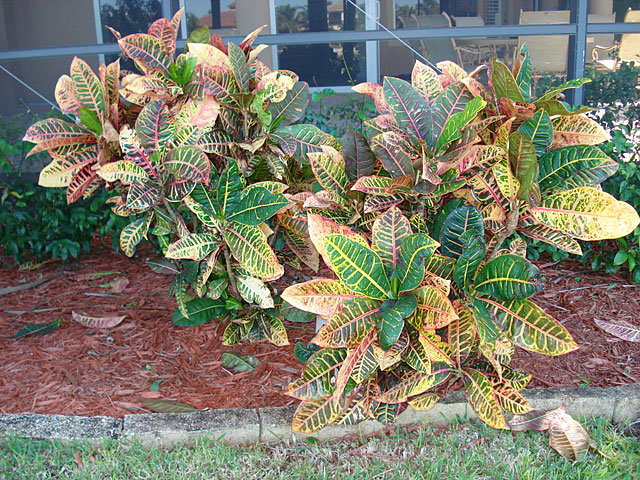
Croton-Bravo
There are literally hundreds of named varieties in this group which portray unusual leaf shapes and wild mixtures of vivid colors beyond imagination. They make a fabulous addition to tropical landscapes and mix great with ferns, bromeliads, palms and others plants that have similar water and light requirements. Crotons don’t have a significant bloom but the eye-popping mixed colors of the leaf are the real attraction. They are drought tolerant once established, like a well drained soil and should not be over watered. While most varieties do great in shade, be sure to plant them in the right location since some do well in full sun while others do not like hot, all day sun and will bleach out. Some varieties are semi-dwarf and others get quite large so space in the landscape is important. Some of our inventory includes: (Bravo, Buddy, Mammey, Gold Dust, Stoplight for full sun or partial shade) (Icetone, Oakleaf, Petra for partial shade or darker shade). All varieties can receive significant damage in frost or freezing temperatures.
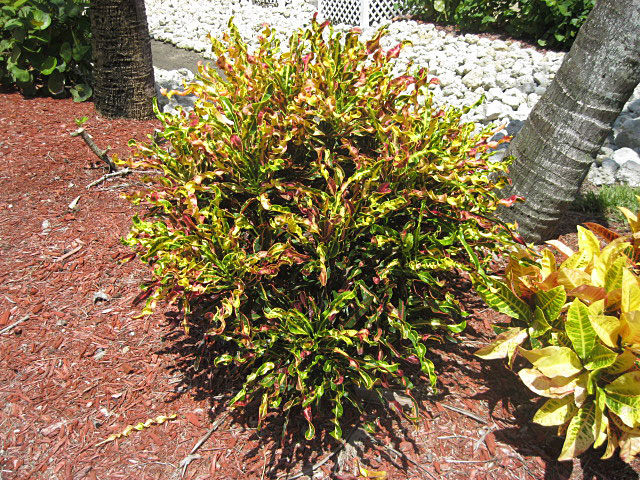
Croton-Curly-Q
There are literally hundreds of named varieties in this group which portray unusual leaf shapes and wild mixtures of vivid colors beyond imagination. They make a fabulous addition to tropical landscapes and mix great with ferns, bromeliads, palms and others plants that have similar water and light requirements. Crotons don’t have a significant bloom but the eye-popping mixed colors of the leaf are the real attraction. They are drought tolerant once established, like a well drained soil and should not be over watered. While most varieties do great in shade, be sure to plant them in the right location since some do well in full sun while others do not like hot, all day sun and will bleach out. Some varieties are semi-dwarf and others get quite large so space in the landscape is important. Some of our inventory includes: (Bravo, Buddy, Mammey, Gold Dust, Stoplight for full sun or partial shade) (Icetone, Oakleaf, Petra for partial shade or darker shade). All varieties can receive significant damage in frost or freezing temperatures.
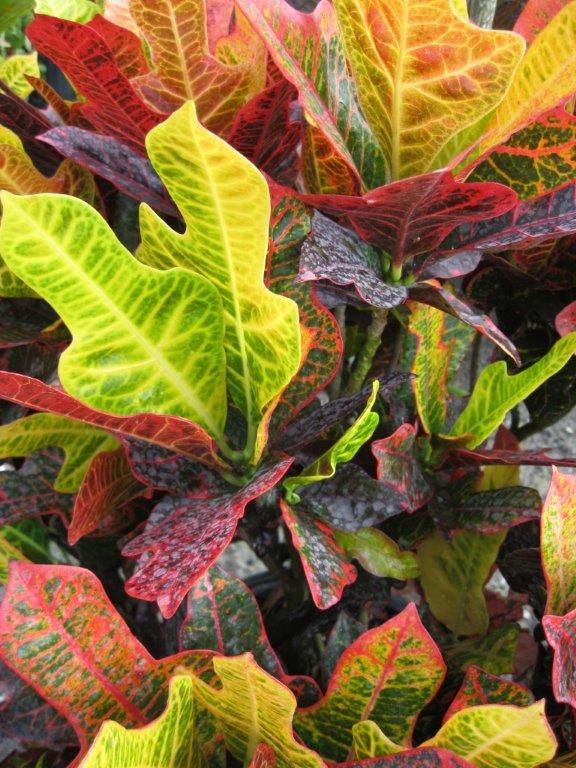
Croton - Excellent
There are literally hundreds of named varieties in this group which portray unusual leaf shapes and wild mixtures of vivid colors beyond imagination. They make a fabulous addition to tropical landscapes and mix great with ferns, bromeliads, palms and others plants that have similar water and light requirements. Crotons don’t have a significant bloom but the eye-popping mixed colors of the leaf are the real attraction. They are drought tolerant once established, like a well drained soil and should not be over watered. While most varieties do great in shade, be sure to plant them in the right location since some do well in full sun while others do not like hot, all day sun and will bleach out. Some varieties are semi-dwarf and others get quite large so space in the landscape is important. Some of our inventory includes: (Bravo, Buddy, Mammey, Gold Dust, Stoplight for full sun or partial shade) (Icetone, Oakleaf, Petra for partial shade or darker shade). All varieties can receive significant damage in frost or freezing temperatures.
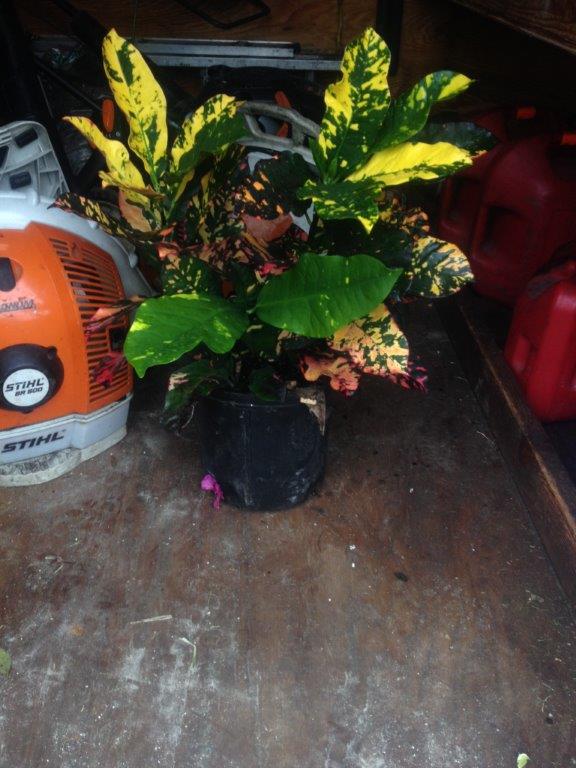
Croton - Magnificent
There are literally hundreds of named varieties in this group which portray unusual leaf shapes and wild mixtures of vivid colors beyond imagination. They make a fabulous addition to tropical landscapes and mix great with ferns, bromeliads, palms and others plants that have similar water and light requirements. Crotons don’t have a significant bloom but the eye-popping mixed colors of the leaf are the real attraction. They are drought tolerant once established, like a well drained soil and should not be over watered. While most varieties do great in shade, be sure to plant them in the right location since some do well in full sun while others do not like hot, all day sun and will bleach out. Some varieties are semi-dwarf and others get quite large so space in the landscape is important. Some of our inventory includes: (Bravo, Buddy, Mammey, Gold Dust, Stoplight for full sun or partial shade) (Icetone, Oakleaf, Petra for partial shade or darker shade). All varieties can receive significant damage in frost or freezing temperatures.
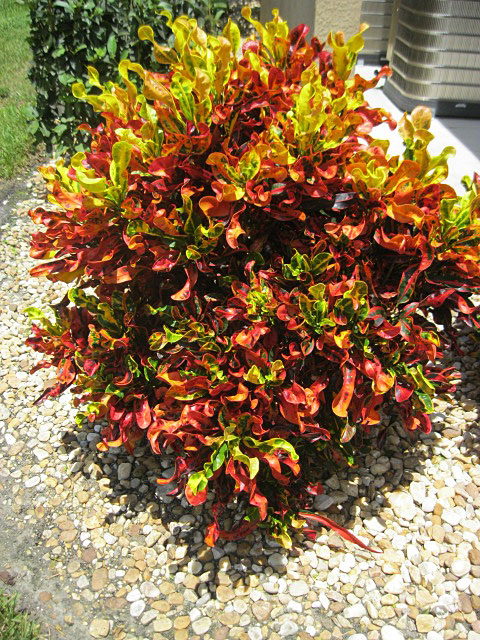
Croton-Mammy
There are literally hundreds of named varieties in this group which portray unusual leaf shapes and wild mixtures of vivid colors beyond imagination. They make a fabulous addition to tropical landscapes and mix great with ferns, bromeliads, palms and others plants that have similar water and light requirements. Crotons don’t have a significant bloom but the eye-popping mixed colors of the leaf are the real attraction. They are drought tolerant once established, like a well drained soil and should not be over watered. While most varieties do great in shade, be sure to plant them in the right location since some do well in full sun while others do not like hot, all day sun and will bleach out. Some varieties are semi-dwarf and others get quite large so space in the landscape is important. Some of our inventory includes: (Bravo, Buddy, Mammey, Gold Dust, Stoplight for full sun or partial shade) (Icetone, Oakleaf, Petra for partial shade or darker shade). All varieties can receive significant damage in frost or freezing temperatures.
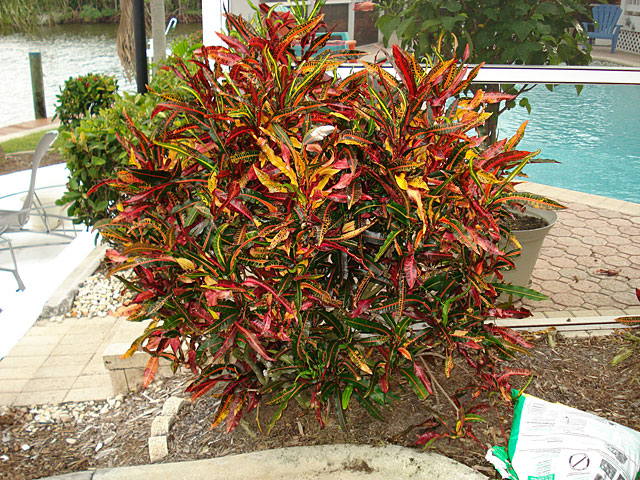
Croton - Paint Brush
There are literally hundreds of named varieties in this group which portray unusual leaf shapes and wild mixtures of vivid colors beyond imagination. They make a fabulous addition to tropical landscapes and mix great with ferns, bromeliads, palms and others plants that have similar water and light requirements. Crotons don’t have a significant bloom but the eye-popping mixed colors of the leaf are the real attraction. They are drought tolerant once established, like a well drained soil and should not be over watered. While most varieties do great in shade, be sure to plant them in the right location since some do well in full sun while others do not like hot, all day sun and will bleach out. Some varieties are semi-dwarf and others get quite large so space in the landscape is important. Some of our inventory includes: (Bravo, Buddy, Mammey, Gold Dust, Stoplight for full sun or partial shade) (Icetone, Oakleaf, Petra for partial shade or darker shade). All varieties can receive significant damage in frost or freezing temperatures.
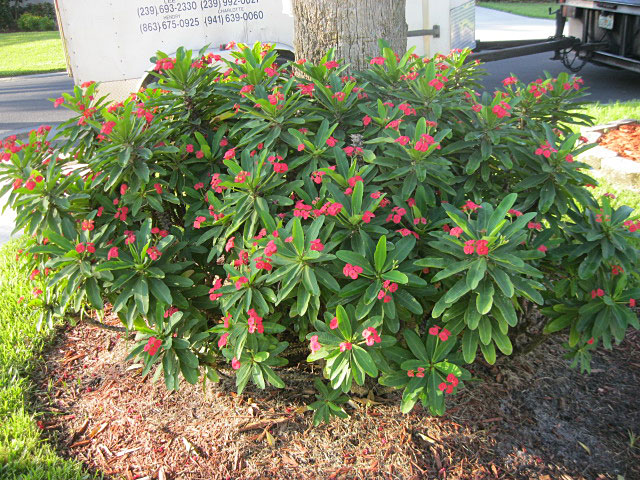
Crown of Thorn-American Beauty
Originally from Madagascar this semi-succulent got its name in biblical times. Supposedly this plant was used to make the thorny crown for Jesus at the Crucifixion. Red is the most popular but they come in other dazzling colors like hot pink and yellow. Some varieties are lower growing dwarf types and they all have thorns. The plant blooms profusely year round and is very drought tolerant. They prefer full sun but will do o.k. in partial shade. When pruning, be careful of the milky sap which can irritate the skin or eyes and the rest of the plant is toxic if ingested. Most varieties are very salt tolerant and can handle 32˚F but can receive damage in a frost.
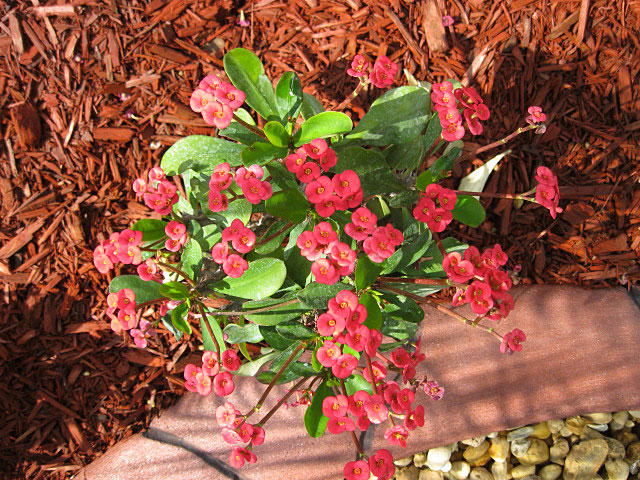
Crown of Thorn-Cora Red
Originally from Madagascar this semi-succulent got its name in biblical times. Supposedly this plant was used to make the thorny crown for Jesus at the Crucifixion. Red is the most popular but they come in other dazzling colors like hot pink and yellow. Some varieties are lower growing dwarf types and they all have thorns. The plant blooms profusely year round and is very drought tolerant. They prefer full sun but will do o.k. in partial shade. When pruning, be careful of the milky sap which can irritate the skin or eyes and the rest of the plant is toxic if ingested. Most varieties are very salt tolerant and can handle 32˚F but can receive damage in a frost.

Crown of Thorn-Dini Yellow
Originally from Madagascar this semi-succulent got its name in biblical times. Supposedly this plant was used to make the thorny crown for Jesus at the Crucifixion. Red is the most popular but they come in other dazzling colors like hot pink and yellow. Some varieties are lower growing dwarf types and they all have thorns. The plant blooms profusely year round and is very drought tolerant. They prefer full sun but will do o.k. in partial shade. When pruning, be careful of the milky sap which can irritate the skin or eyes and the rest of the plant is toxic if ingested. Most varieties are very salt tolerant and can handle 32˚F but can receive damage in a frost.

Crown of Thorn-Cora Pink
Originally from Madagascar this semi-succulent got its name in biblical times. Supposedly this plant was used to make the thorny crown for Jesus at the Crucifixion. Red is the most popular but they come in other dazzling colors like hot pink and yellow. Some varieties are lower growing dwarf types and they all have thorns. The plant blooms profusely year round and is very drought tolerant. They prefer full sun but will do o.k. in partial shade. When pruning, be careful of the milky sap which can irritate the skin or eyes and the rest of the plant is toxic if ingested. Most varieties are very salt tolerant and can handle 32˚F but can receive damage in a frost.
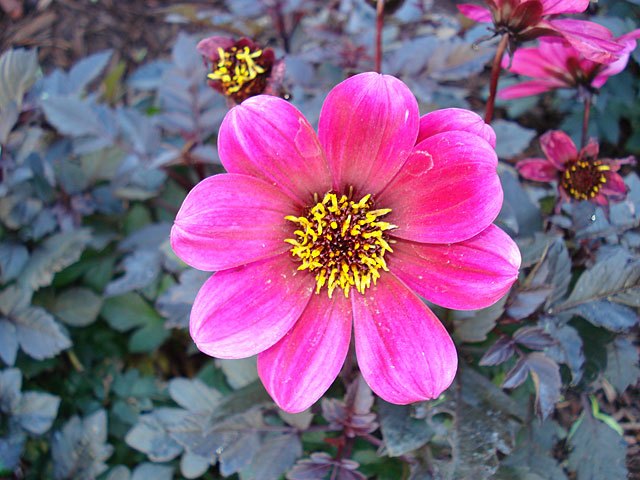
Dahlia
Dahlia plants range in height from as low as 12 inches to as tall as 6-8 feet. The flowers can be as small as 2 inches or up to a foot in diameter.
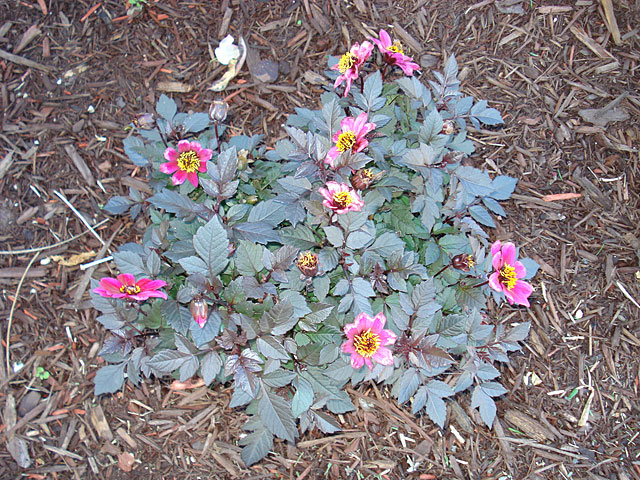
Dahlia
Dahlia plants range in height from as low as 12 inches to as tall as 6-8 feet. The flowers can be as small as 2 inches or up to a foot in diameter.

Dracaena-Colorama
Also referred to as Song of India or Pleomele this plant has narrower and shorter leaves than most other Dracaena’s and comes in a green or variegated variety. Shinny, pointed leaves are a pleasing dark green and the variegated one has a contrasting cream colored outer ribbon. They are frequently used as a containerized interior plant inside malls and atriums. It does well in full sun but is not used much in outdoor landscapes due to its unusual size and shape. This is a warm weather tropical plant, like most Dracaena’s and should be protected in temperatures below 45°F.
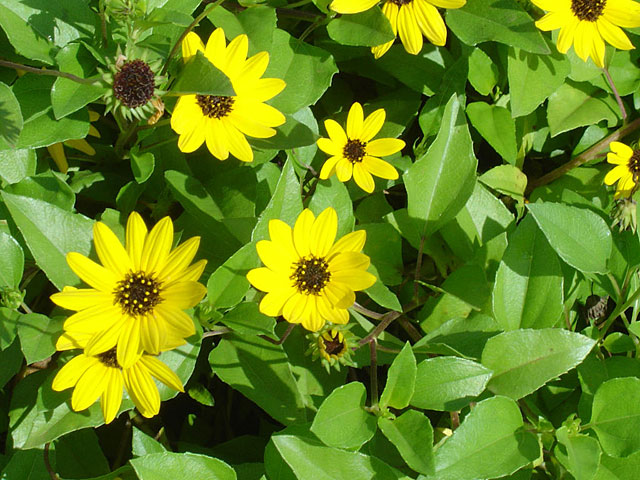
Dune Sunflower
Dune sunflowers are superb groundcover plants for Florida. They prefer our well drained, sandy soil and thrive in the hot sun, even on the beach dunes! The growth is fast on these plants and will provide full groundcover in those hot difficult areas of your landscape. Flowers generally appear year round however, may become dormant in colder winter temperatures.
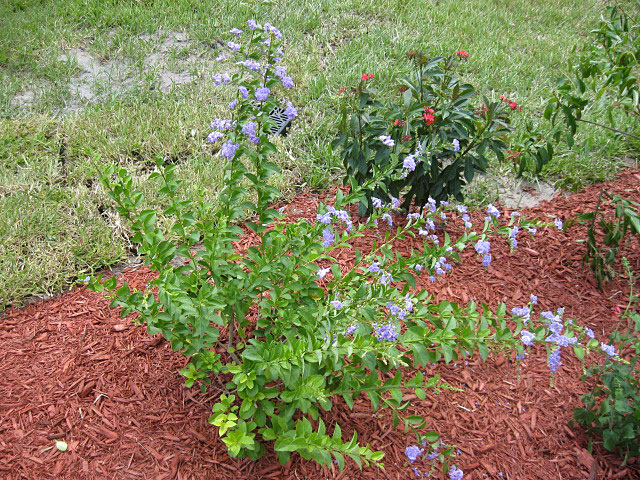
Duranta-Golden Dew Drop
This tropical shrub or small tree may be grown in a mixed or shrub border; in colder climates, it does well in a temperate greenhouse. Flowers in shades of sky-blue, lilac, purple, or white blossom gracefully along arching branches in summer; they are followed by spherical, yellow fruit.
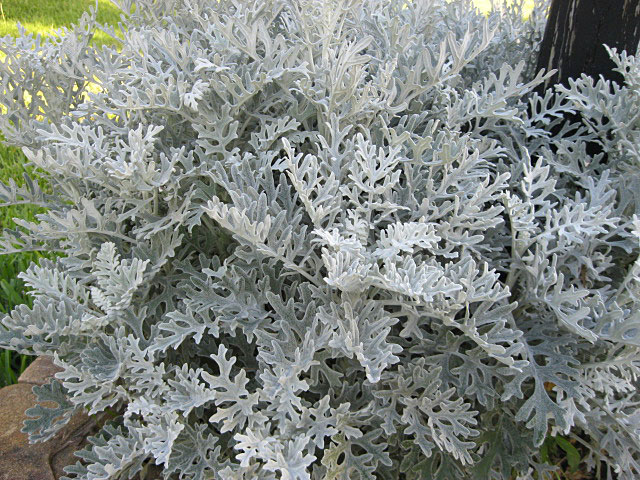
Dusty Miller
Grows one to two feet tall with finely divided leaflets and white daisy flowers about one and a half inches in diameter. Senecio cineraria is a bushy subshrub that grows to two and a half feet tall with finely divided gray foliage.
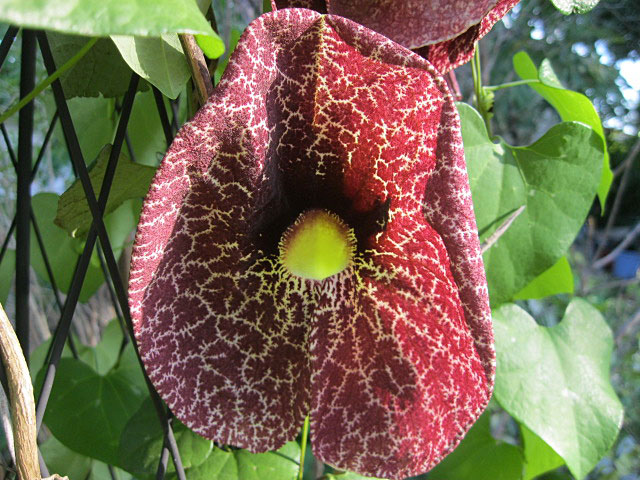
Dutchmen's Pipe Vine
Dutchmans Pipe is a common vine in moist southern Appalachian hardwood forests in coves and along stream banks easily twining 20 to 30 feet high. It has been popular as a porch screen for ages because it is fast growing, has large heart shaped leaves, and has odd little flowers. The two inch pale brownish purple flowers are pipe shaped or s-shaped with a widely flaring triangular mouth perfect for catching careless flies. The curious looking early summer flowers are borne sparsely among the wide leaves. Try it on a trellis for screening or let it ramble among shrubs and trees. It likes good moist soil and can take either shade or sun.;It is also the host plant for the pipevine swallowtail butterfly. The black butterfly caterpillars feed on leaves of Dutchmans Pipe and become poisonous to predators. Adult butterflies are a beautiful black and blue
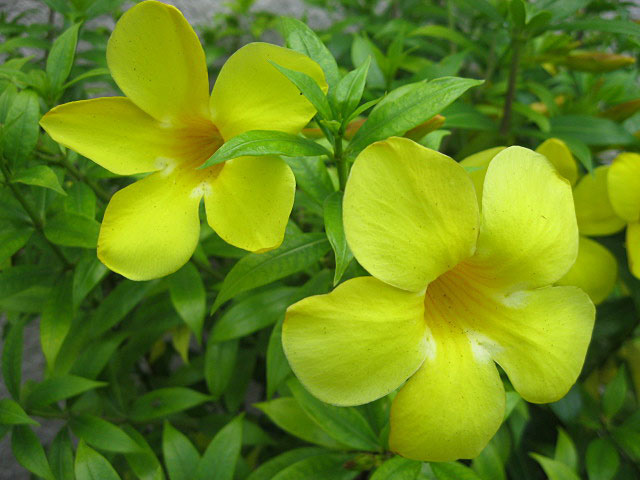
Dwarf Alamanda
This is the Dwarf variety of the Allamanda Bush that blooms from May to November. It is great for trimming into a small hedge as it will only grow about 3 feet. The beautiful flowers are slightly larger and can add a ton of color to your garden.
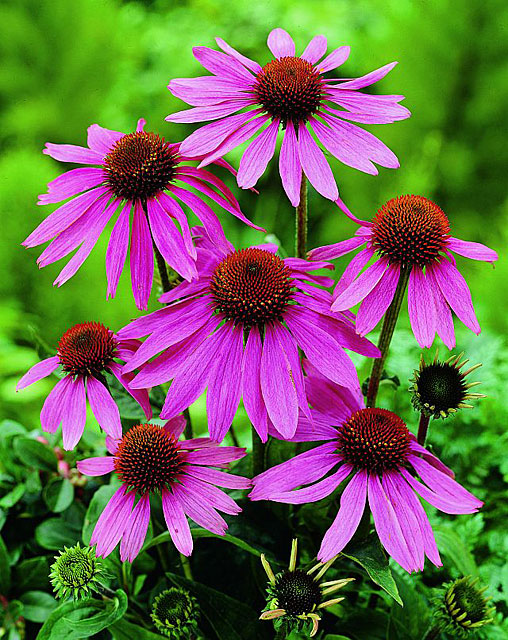
Echinacea-Prarie Splender
This, the queen of the Daisies, is called Coneflower for its dome-shaped center. Plants continue to bloom from June into the fall. Breeders have teased out a considerable range of pinks, purples, yellows, and oranges, plus white, with more hues coming every year. There are double-flowered forms as well as varieties with petals pulled back like a badminton shuttlecock. We’re not qualified to comment on the health-giving properties attributed to the leaves, but can aver that these are first-class garden plants for full sun.
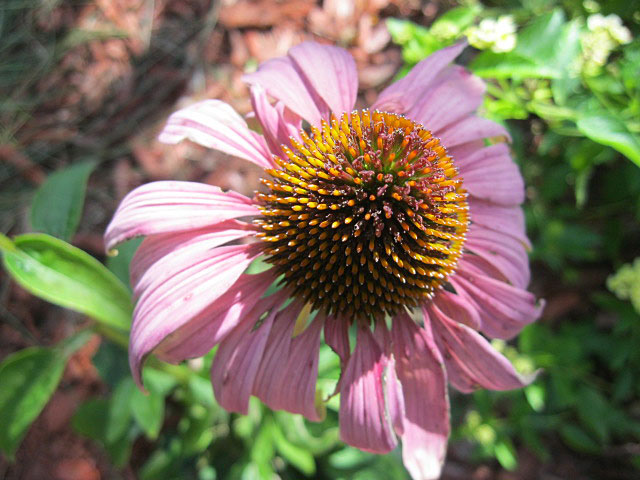
Echinacea-Purple
This, the queen of the Daisies, is called Coneflower for its dome-shaped center. Plants continue to bloom from June into the fall. Breeders have teased out a considerable range of pinks, purples, yellows, and oranges, plus white, with more hues coming every year. There are double-flowered forms as well as varieties with petals pulled back like a badminton shuttlecock. We’re not qualified to comment on the health-giving properties attributed to the leaves, but can aver that these are first-class garden plants for full sun.
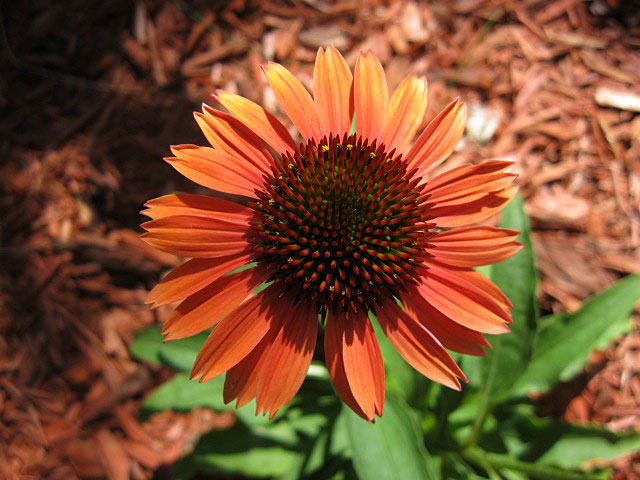
Echinacea-Red
This, the queen of the Daisies, is called Coneflower for its dome-shaped center. Plants continue to bloom from June into the fall. Breeders have teased out a considerable range of pinks, purples, yellows, and oranges, plus white, with more hues coming every year. There are double-flowered forms as well as varieties with petals pulled back like a badminton shuttlecock. We’re not qualified to comment on the health-giving properties attributed to the leaves, but can aver that these are first-class garden plants for full sun.
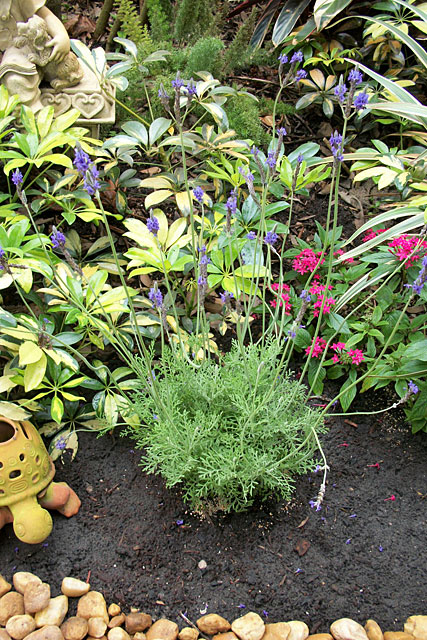
English Lavender
Reaching heights ranging from 2'-3', their spread can be equal to that or twice that, depending on cultivar. In general, Lavandula angustifolia bears flowers that are lilac-blue in color and grow on spikes, with leaves that are narrow and greyish-green. But various cultivars exist, differing in characteristics.
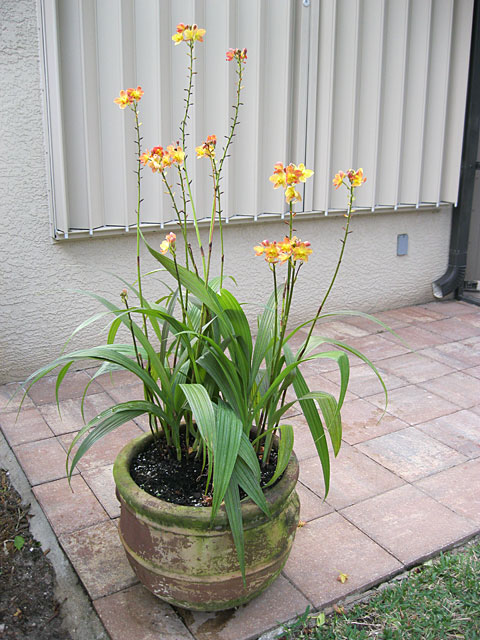
Epidendrum-Ground Orchids
The leaves of epidendrum orchids which grow up the cane are leathery and the small, beautiful one inch mini cattleya shaped flowers appear in a globular heads of 30 to 40 flowers at a time. The long-lasting blooms are borne at the top of a long spike. Many species have a fragrance. After flowering, the spike may be left on the plant and it will generally flower again in a few months. The spike is also prone to producing a keikis (baby plant) after flowering. Once these keikis develop their own 2- to 4-inch-long roots, they can be detached and planted individually.
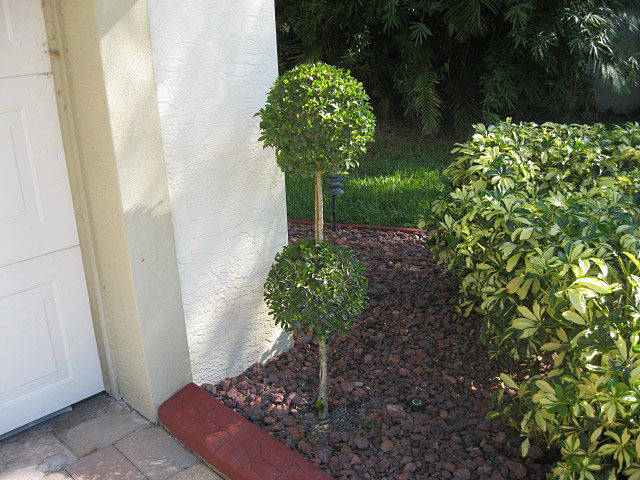
Eugenia-2 Ball Topiary
These tall and narrow plants are usually as wide as their container. Most plants are groomed into topiaries in 1,2 or 3 ball configurations. Bush forms are about 6 inches to 12 inchea wider than their container. Large specimens are available in heights of 6 to 8 feet.
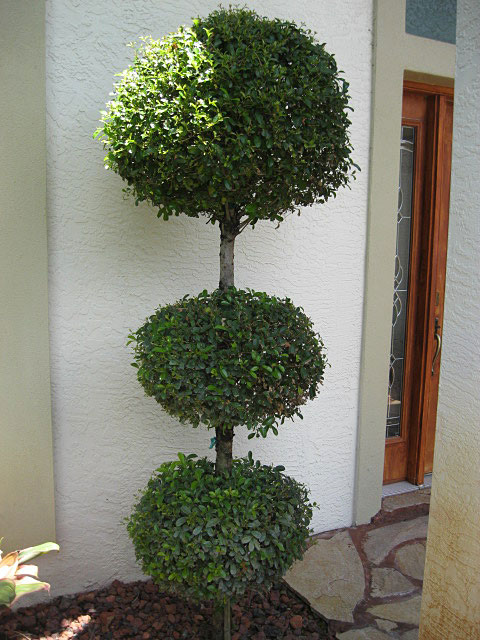
Eugenia-3 Ball Topiary
These tall and narrow plants are usually as wide as their container. Most plants are groomed into topiaries in 1,2 or 3 ball configurations. Bush forms are about 6 inches to 12 inchea wider than their container. Large specimens are available in heights of 6 to 8 feet.
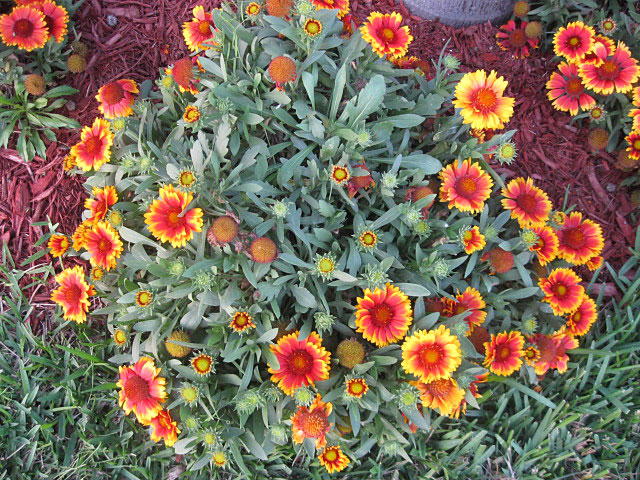
Gaillardia-Arizona Sun
Gaillardia, or Blanket Flower, is a group of about 30 species that include both annuals and perennials. With bright and colorful daisy-like flowers it is no wonder this native wildflower has earned a spot on the heart of gardeners everywhere. The most common species for garden use is Gaillardia grandiflora. It is this perennial, and some of its most unique cultivars that we will discuss here. Hardy, sun-loving and easy to keep it deserves a place in every garden.
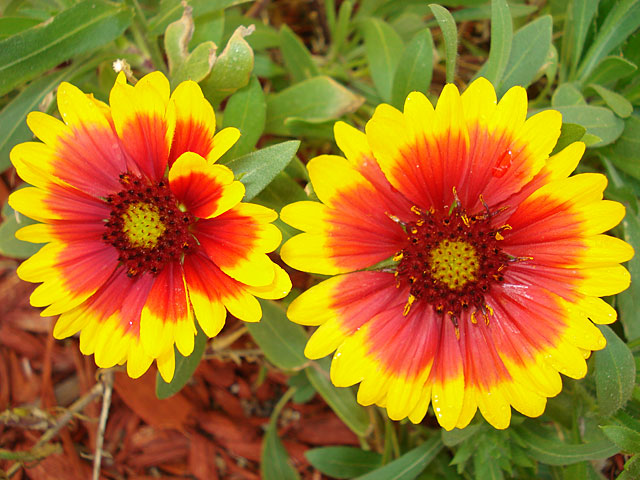
Gaillardia-Arizona Sun
Gaillardia, or Blanket Flower, is a group of about 30 species that include both annuals and perennials. With bright and colorful daisy-like flowers it is no wonder this native wildflower has earned a spot on the heart of gardeners everywhere. The most common species for garden use is Gaillardia grandiflora. It is this perennial, and some of its most unique cultivars that we will discuss here. Hardy, sun-loving and easy to keep it deserves a place in every garden.
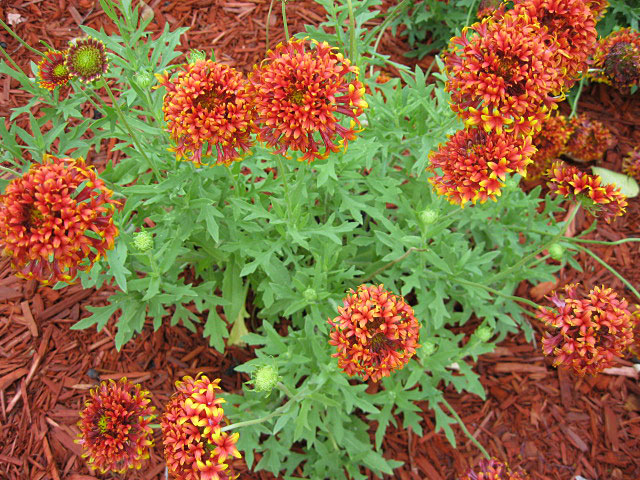
Gaillardia-Hybrid Sun
Gaillardia, or Blanket Flower, is a group of about 30 species that include both annuals and perennials. With bright and colorful daisy-like flowers it is no wonder this native wildflower has earned a spot on the heart of gardeners everywhere. The most common species for garden use is Gaillardia grandiflora. It is this perennial, and some of its most unique cultivars that we will discuss here. Hardy, sun-loving and easy to keep it deserves a place in every garden.
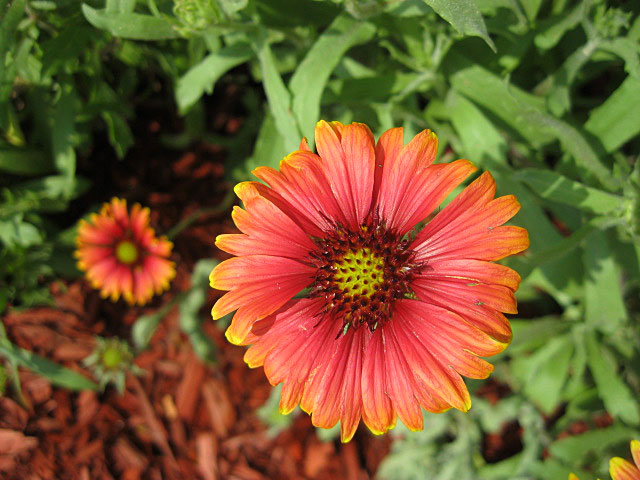
Gaillardia-Wolf
Gaillardia, or Blanket Flower, is a group of about 30 species that include both annuals and perennials. With bright and colorful daisy-like flowers it is no wonder this native wildflower has earned a spot on the heart of gardeners everywhere. The most common species for garden use is Gaillardia grandiflora. It is this perennial, and some of its most unique cultivars that we will discuss here. Hardy, sun-loving and easy to keep it deserves a place in every garden.
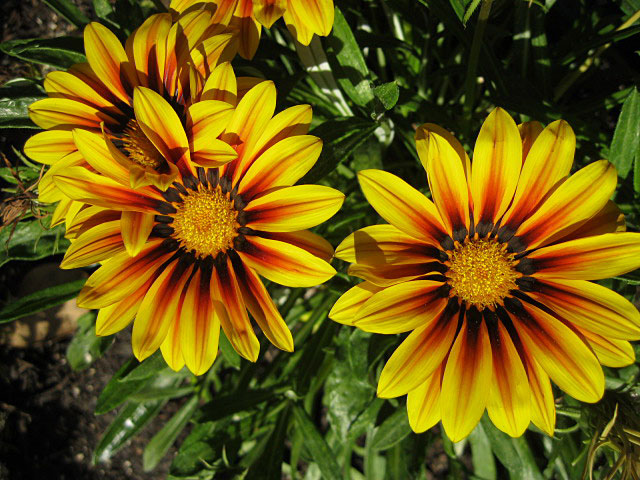
Gazania-Blooms Annual
Gazania is a South African perennial that looks similar to a daisy, but in bold, brilliant yellows, oranges, reds, pinks, cream and even a beautiful mauve and a burgundy color. It's a plant that is perfect for window boxes or any hot, dry and sunny spot. I grouped together the pinks and mauve with dusty miller, which is a silver gray color. I also used the yellows and oranges in another box. I was able to find them by the flat this year which was a super savings over buying the individual plants.

Gazania-Gold
Gazania is a South African perennial that looks similar to a daisy, but in bold, brilliant yellows, oranges, reds, pinks, cream and even a beautiful mauve and a burgundy color. It's a plant that is perfect for window boxes or any hot, dry and sunny spot. I grouped together the pinks and mauve with dusty miller, which is a silver gray color. I also used the yellows and oranges in another box. I was able to find them by the flat this year which was a super savings over buying the individual plants.
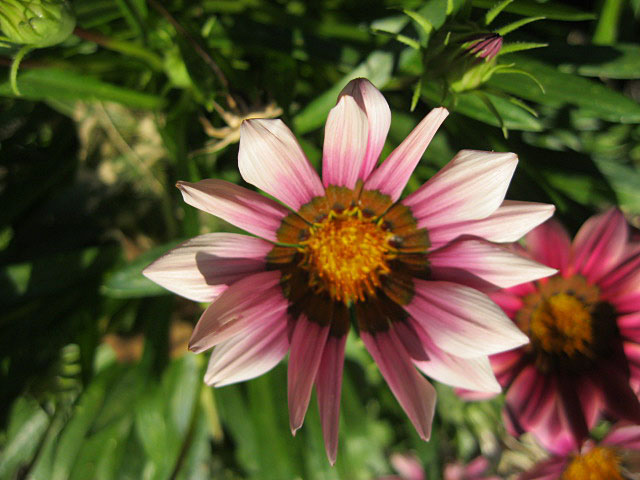
Gazania-Pink
Gazania is a South African perennial that looks similar to a daisy, but in bold, brilliant yellows, oranges, reds, pinks, cream and even a beautiful mauve and a burgundy color. It's a plant that is perfect for window boxes or any hot, dry and sunny spot. I grouped together the pinks and mauve with dusty miller, which is a silver gray color. I also used the yellows and oranges in another box. I was able to find them by the flat this year which was a super savings over buying the individual plants.
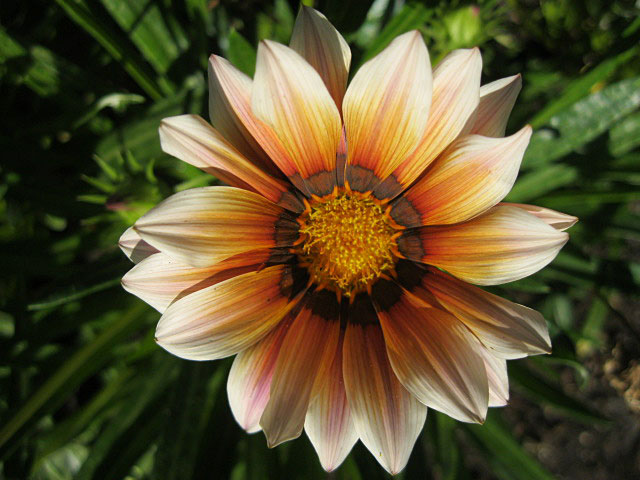
Gazania-White
Gazania is a South African perennial that looks similar to a daisy, but in bold, brilliant yellows, oranges, reds, pinks, cream and even a beautiful mauve and a burgundy color. It's a plant that is perfect for window boxes or any hot, dry and sunny spot. I grouped together the pinks and mauve with dusty miller, which is a silver gray color. I also used the yellows and oranges in another box. I was able to find them by the flat this year which was a super savings over buying the individual plants.
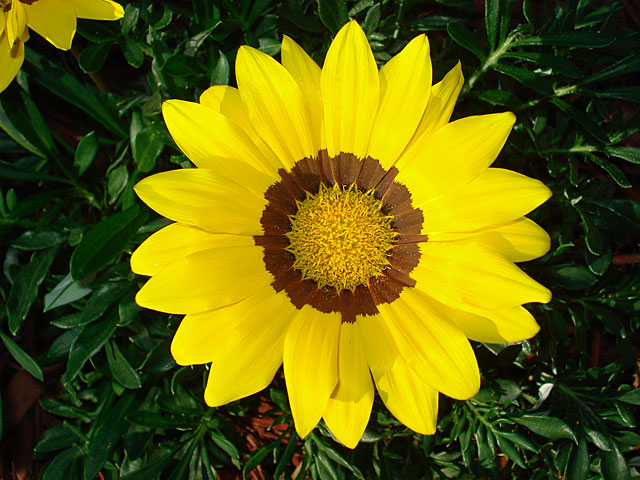
Gazania-Yellow
Gazania is a South African perennial that looks similar to a daisy, but in bold, brilliant yellows, oranges, reds, pinks, cream and even a beautiful mauve and a burgundy color. It's a plant that is perfect for window boxes or any hot, dry and sunny spot. I grouped together the pinks and mauve with dusty miller, which is a silver gray color. I also used the yellows and oranges in another box. I was able to find them by the flat this year which was a super savings over buying the individual plants.
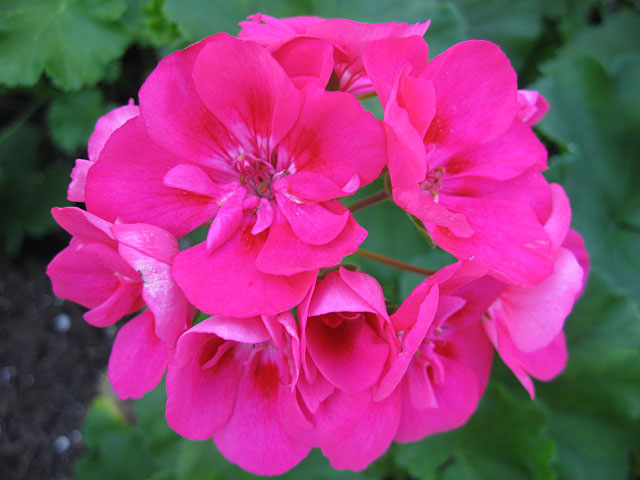
Geranium-Blue
True or hardy or perennial geraniums belong to the genus Geranium. You will sometimes see them referred to as cranesbill geraniums, because their seed pods do somewhat resemble a crane’s bill. The foliage is often toothed and remains attractive. The flowers float on top of the plant, in shades of white, pink, magenta, purples and blues.
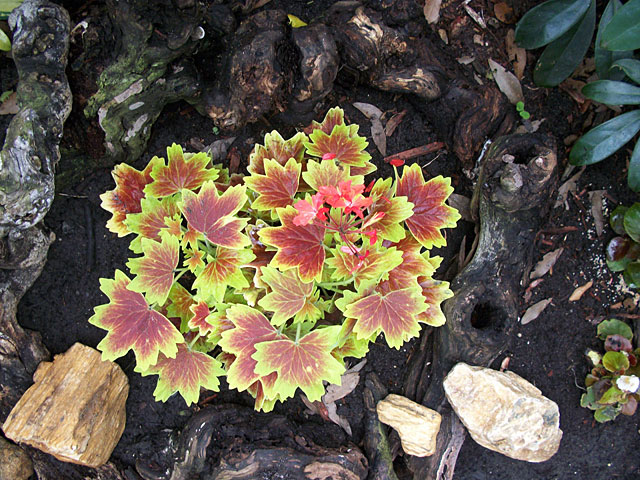
Geranium-Vancouver Centennial
True or hardy or perennial geraniums belong to the genus Geranium. You will sometimes see them referred to as cranesbill geraniums, because their seed pods do somewhat resemble a crane’s bill. The foliage is often toothed and remains attractive. The flowers float on top of the plant, in shades of white, pink, magenta, purples and blues.
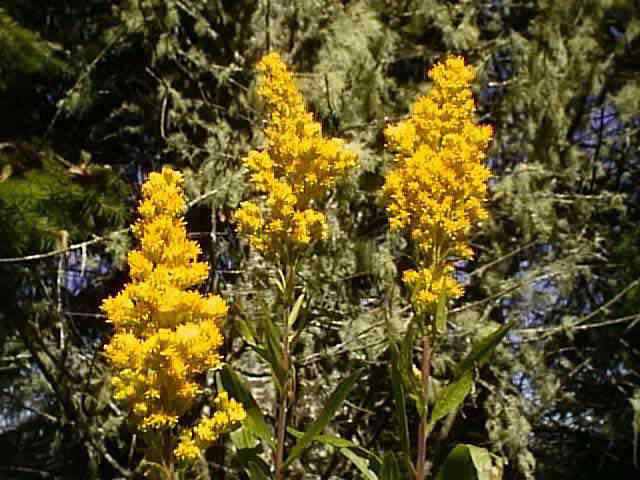
Goldenrod
They are all perennials with large clusters of small yellow flowers that appear from the end of summer until frost. The leaves of goldenrods are simple, lance or egg shaped and usually have a toothed margin. Most species propagate by a spreading root system in addition to seed. They can be a troublesome addition to a wildflower garden for that reason.
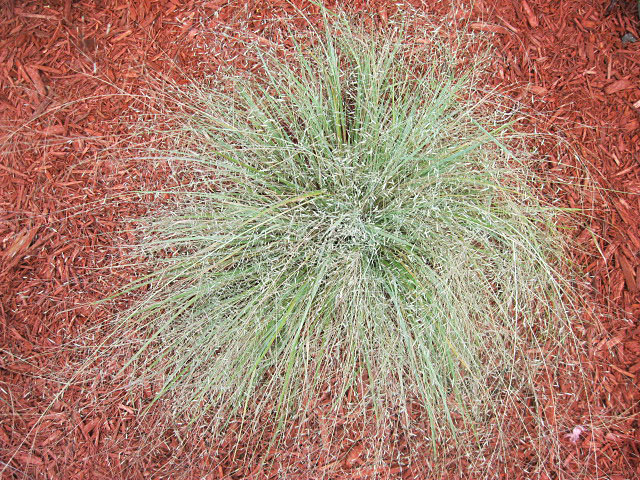
Grass-Elliot's Love Grass
There are two types of this native ornamental grass, Elliot's lovegrass and purple lovegrass. Both grow in clumps, with stiff leaves and a fine cloud of wispy flowers. Lovegrass thrives in full sun and sandy, poor soil. Planted in masses, it gives texture and interest to your landscape, and helps control erosion on sloping ground.

Grass-Fakahatchee
Native to the Southeastern U.S., fakahatchee grass (also called gama grass) is easy to grow and virtually pest-free. This ornamental grass has spiky foliage rising upright from five foot tall clumps, with small wine-colored flowers appearing in late spring to mid-summer. It prefers sunny to partially shady areas with moist to wet soil.

Hibiscus-Carnation Red
Hibiscus are deciduous shrubs with dark green leaves; the plants can grow to 15 feet tall in frost-free areas. Flowers may be up to 6 inches diameter, with colors ranging from yellow to peach to red. Hibiscus can be planted singly or grown as a hedge plant; they can also be pruned into a single-stemmed small tree. The flowers are attractive to butterflies and hummingbirds.

Hibiscus-Dbl Orange
Hibiscus are deciduous shrubs with dark green leaves; the plants can grow to 15 feet tall in frost-free areas. Flowers may be up to 6 inches diameter, with colors ranging from yellow to peach to red. Hibiscus can be planted singly or grown as a hedge plant; they can also be pruned into a single-stemmed small tree. The flowers are attractive to butterflies and hummingbirds.
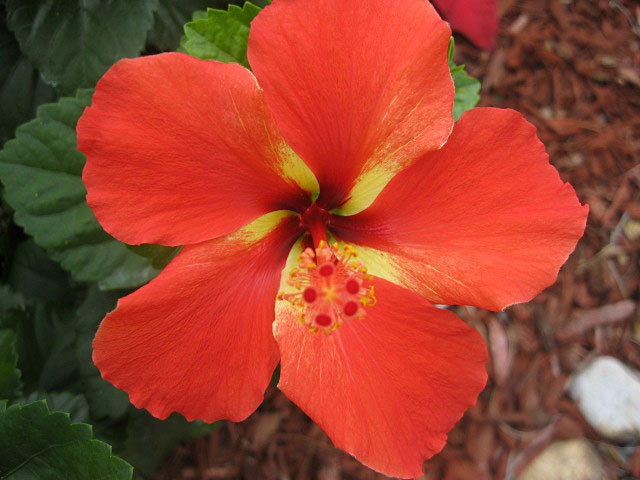
Hibiscus-Dwarf Red Hybrid
Hibiscus are deciduous shrubs with dark green leaves; the plants can grow to 15 feet tall in frost-free areas. Flowers may be up to 6 inches diameter, with colors ranging from yellow to peach to red. Hibiscus can be planted singly or grown as a hedge plant; they can also be pruned into a single-stemmed small tree. The flowers are attractive to butterflies and hummingbirds.
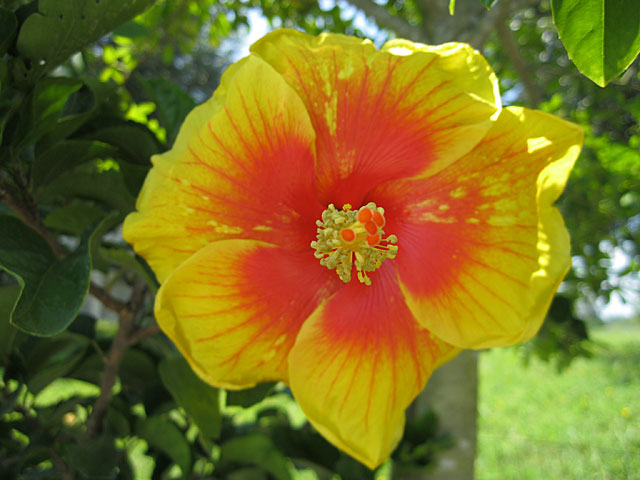
Hibiscus-Hybrid
Hibiscus are deciduous shrubs with dark green leaves; the plants can grow to 15 feet tall in frost-free areas. Flowers may be up to 6 inches diameter, with colors ranging from yellow to peach to red. Hibiscus can be planted singly or grown as a hedge plant; they can also be pruned into a single-stemmed small tree. The flowers are attractive to butterflies and hummingbirds.
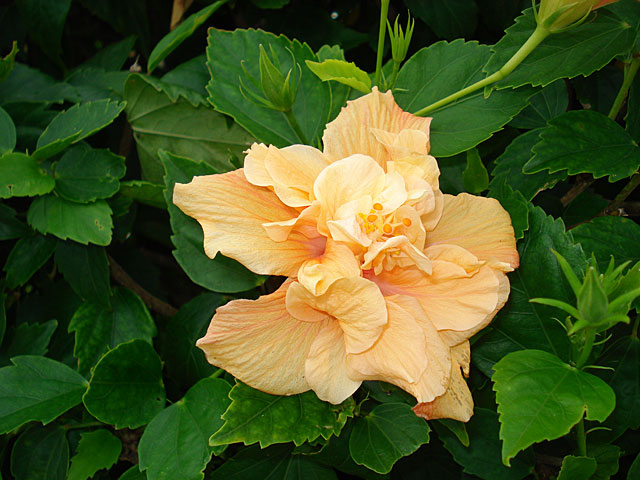
Hibiscus-Jane Kowl
Hibiscus are deciduous shrubs with dark green leaves; the plants can grow to 15 feet tall in frost-free areas. Flowers may be up to 6 inches diameter, with colors ranging from yellow to peach to red. Hibiscus can be planted singly or grown as a hedge plant; they can also be pruned into a single-stemmed small tree. The flowers are attractive to butterflies and hummingbirds.
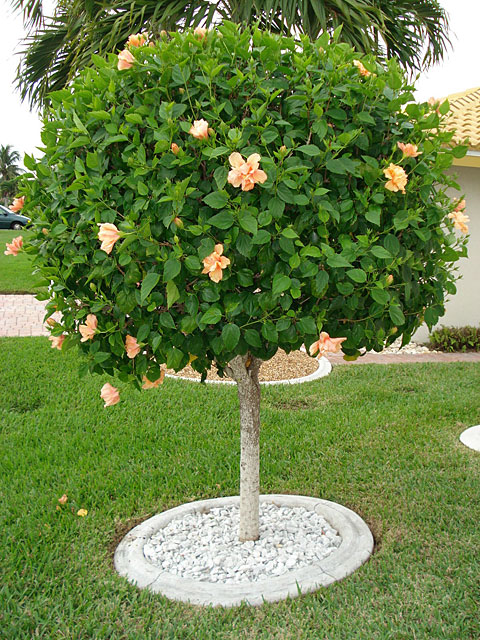
Hibiscus-Jane Kowl Tree
Hibiscus are deciduous shrubs with dark green leaves; the plants can grow to 15 feet tall in frost-free areas. Flowers may be up to 6 inches diameter, with colors ranging from yellow to peach to red. Hibiscus can be planted singly or grown as a hedge plant; they can also be pruned into a single-stemmed small tree. The flowers are attractive to butterflies and hummingbirds.
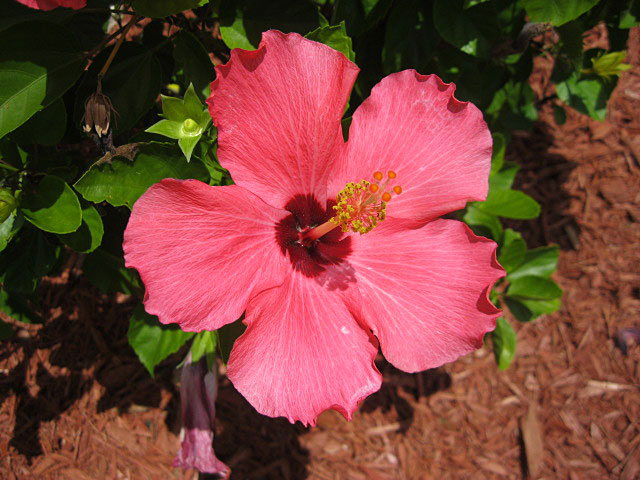
Hibiscus-Painted Lady
Hibiscus are deciduous shrubs with dark green leaves; the plants can grow to 15 feet tall in frost-free areas. Flowers may be up to 6 inches diameter, with colors ranging from yellow to peach to red. Hibiscus can be planted singly or grown as a hedge plant; they can also be pruned into a single-stemmed small tree. The flowers are attractive to butterflies and hummingbirds.
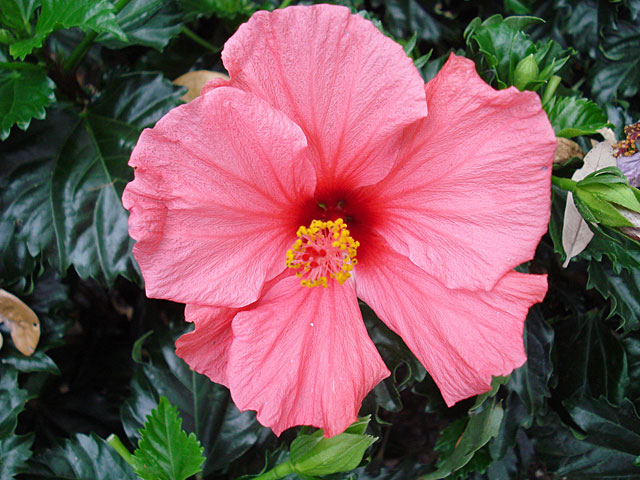
Hibiscus-Pink Versicolor
Hibiscus are deciduous shrubs with dark green leaves; the plants can grow to 15 feet tall in frost-free areas. Flowers may be up to 6 inches diameter, with colors ranging from yellow to peach to red. Hibiscus can be planted singly or grown as a hedge plant; they can also be pruned into a single-stemmed small tree. The flowers are attractive to butterflies and hummingbirds.
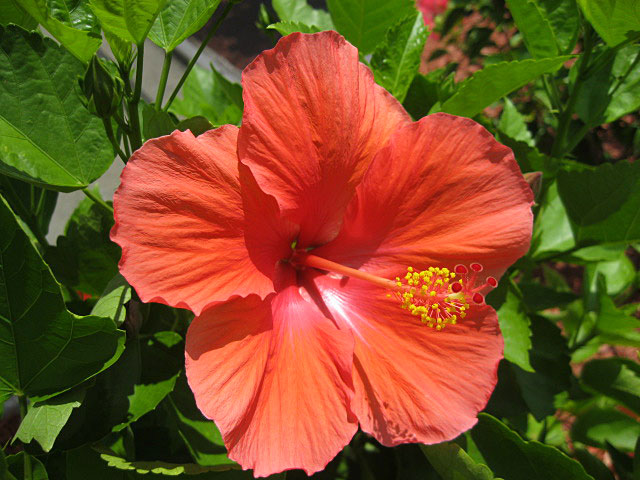
Hibiscus-President Red
Hibiscus are deciduous shrubs with dark green leaves; the plants can grow to 15 feet tall in frost-free areas. Flowers may be up to 6 inches diameter, with colors ranging from yellow to peach to red. Hibiscus can be planted singly or grown as a hedge plant; they can also be pruned into a single-stemmed small tree. The flowers are attractive to butterflies and hummingbirds.
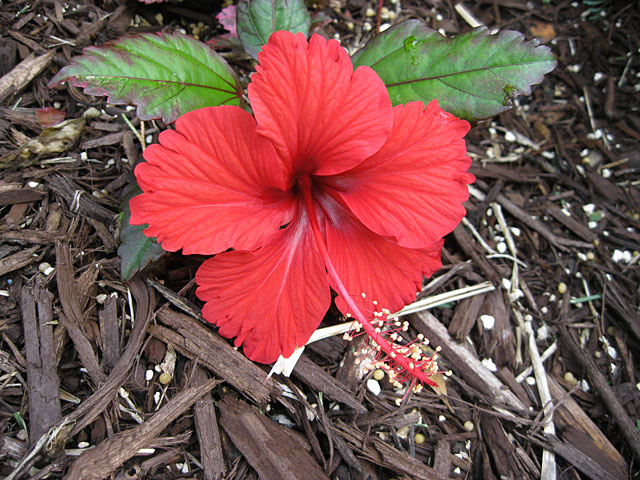
Hibiscus-Red Hot
Hibiscus are deciduous shrubs with dark green leaves; the plants can grow to 15 feet tall in frost-free areas. Flowers may be up to 6 inches diameter, with colors ranging from yellow to peach to red. Hibiscus can be planted singly or grown as a hedge plant; they can also be pruned into a single-stemmed small tree. The flowers are attractive to butterflies and hummingbirds.

Hibiscus-Red Hot Bush
Hibiscus are deciduous shrubs with dark green leaves; the plants can grow to 15 feet tall in frost-free areas. Flowers may be up to 6 inches diameter, with colors ranging from yellow to peach to red. Hibiscus can be planted singly or grown as a hedge plant; they can also be pruned into a single-stemmed small tree. The flowers are attractive to butterflies and hummingbirds.
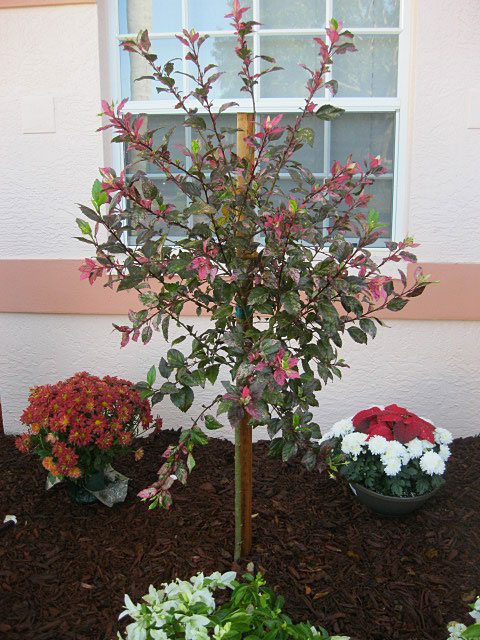
Hibiscus-Red Hot Tree
Hibiscus are deciduous shrubs with dark green leaves; the plants can grow to 15 feet tall in frost-free areas. Flowers may be up to 6 inches diameter, with colors ranging from yellow to peach to red. Hibiscus can be planted singly or grown as a hedge plant; they can also be pruned into a single-stemmed small tree. The flowers are attractive to butterflies and hummingbirds.
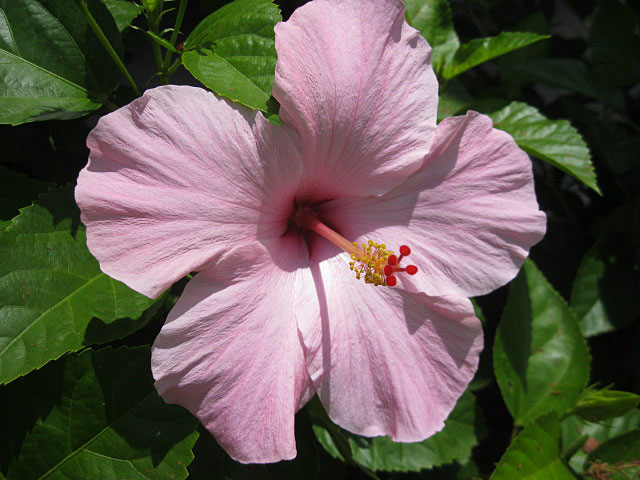
Hibiscus-Seminole Pink
Hibiscus are deciduous shrubs with dark green leaves; the plants can grow to 15 feet tall in frost-free areas. Flowers may be up to 6 inches diameter, with colors ranging from yellow to peach to red. Hibiscus can be planted singly or grown as a hedge plant; they can also be pruned into a single-stemmed small tree. The flowers are attractive to butterflies and hummingbirds.
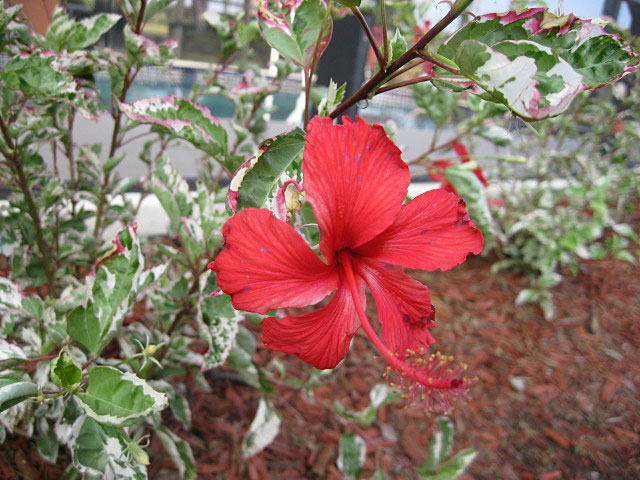
Hibiscus-Snow Queen
Hibiscus are deciduous shrubs with dark green leaves; the plants can grow to 15 feet tall in frost-free areas. Flowers may be up to 6 inches diameter, with colors ranging from yellow to peach to red. Hibiscus can be planted singly or grown as a hedge plant; they can also be pruned into a single-stemmed small tree. The flowers are attractive to butterflies and hummingbirds.
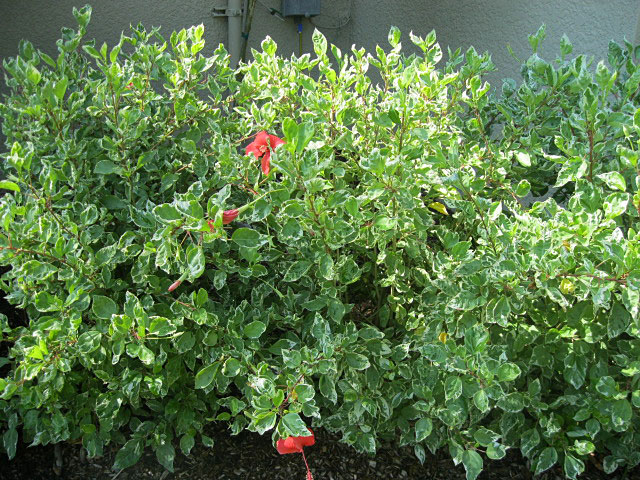
Hibiscus-Snow Queen Bush
Hibiscus are deciduous shrubs with dark green leaves; the plants can grow to 15 feet tall in frost-free areas. Flowers may be up to 6 inches diameter, with colors ranging from yellow to peach to red. Hibiscus can be planted singly or grown as a hedge plant; they can also be pruned into a single-stemmed small tree. The flowers are attractive to butterflies and hummingbirds.

Hibiscus-Spin the Bottle
Hibiscus are deciduous shrubs with dark green leaves; the plants can grow to 15 feet tall in frost-free areas. Flowers may be up to 6 inches diameter, with colors ranging from yellow to peach to red. Hibiscus can be planted singly or grown as a hedge plant; they can also be pruned into a single-stemmed small tree. The flowers are attractive to butterflies and hummingbirds.
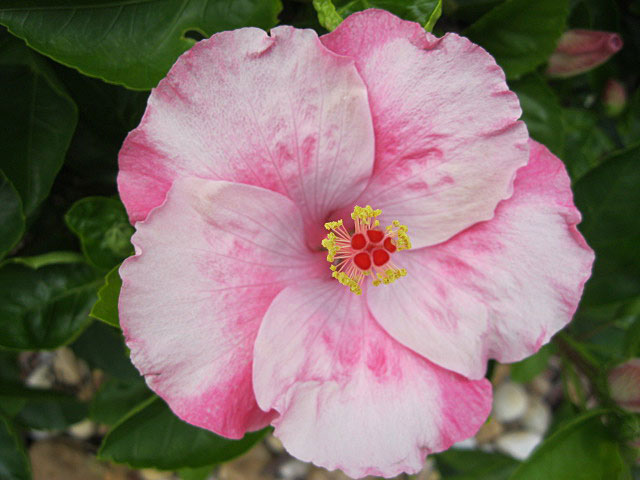
Hibiscus-Strawberry Swirl
Hibiscus are deciduous shrubs with dark green leaves; the plants can grow to 15 feet tall in frost-free areas. Flowers may be up to 6 inches diameter, with colors ranging from yellow to peach to red. Hibiscus can be planted singly or grown as a hedge plant; they can also be pruned into a single-stemmed small tree. The flowers are attractive to butterflies and hummingbirds.
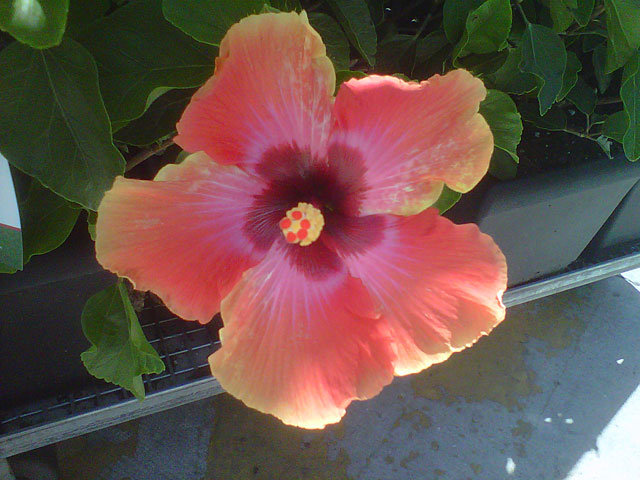
Hibiscus-Sun Kissed
Hibiscus are deciduous shrubs with dark green leaves; the plants can grow to 15 feet tall in frost-free areas. Flowers may be up to 6 inches diameter, with colors ranging from yellow to peach to red. Hibiscus can be planted singly or grown as a hedge plant; they can also be pruned into a single-stemmed small tree. The flowers are attractive to butterflies and hummingbirds.
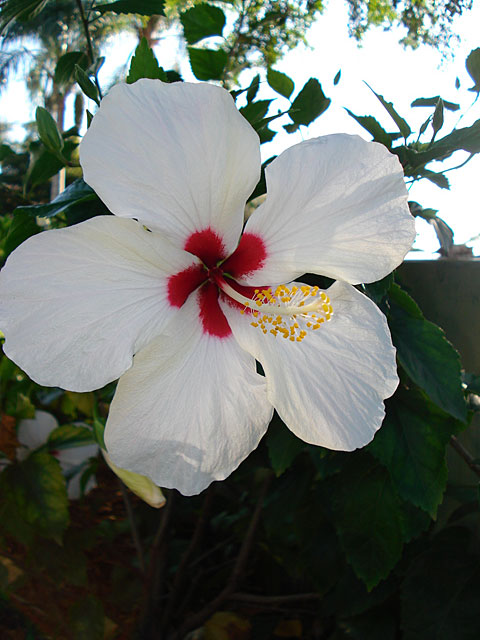
Hibiscus-White
Hibiscus are deciduous shrubs with dark green leaves; the plants can grow to 15 feet tall in frost-free areas. Flowers may be up to 6 inches diameter, with colors ranging from yellow to peach to red. Hibiscus can be planted singly or grown as a hedge plant; they can also be pruned into a single-stemmed small tree. The flowers are attractive to butterflies and hummingbirds.
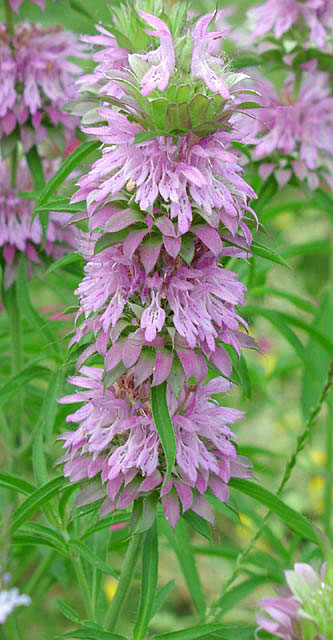
Horse Mint
Horsemint grows up to 5 feet tall in shade, up to about 1 foot tall in the sun. It flowers in the summer, seeds ripen in September.
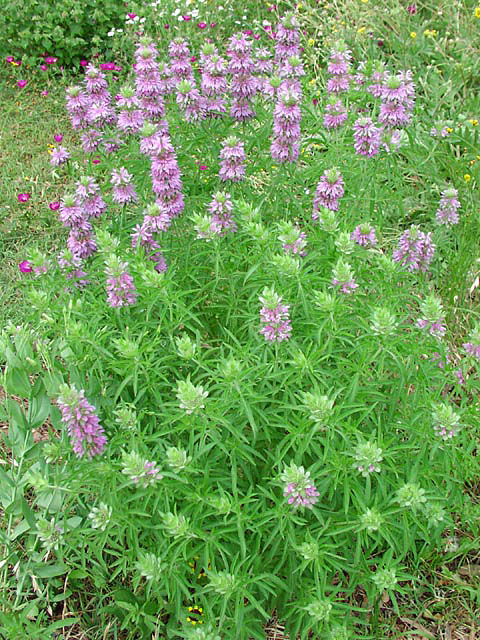
Horse Mint
Horsemint grows up to 5 feet tall in shade, up to about 1 foot tall in the sun. It flowers in the summer, seeds ripen in September.
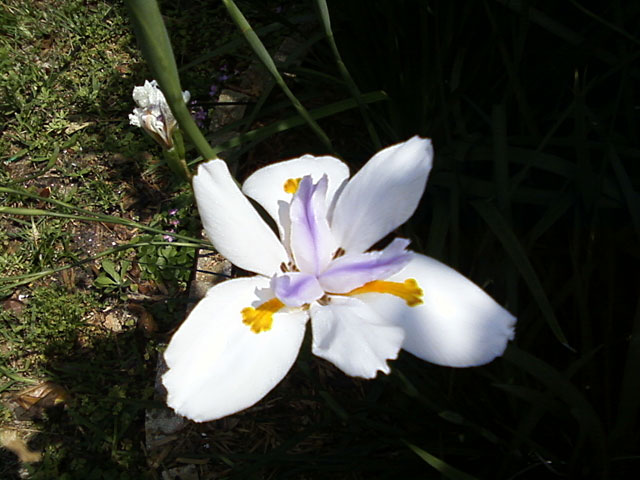
Iris-African Albo
Iris are available in a wide variety of flower colors, including pink, blue, red, yellow, and purple. They bloom in early summer, with some varieties reblooming later in the summer. They grow from 8 inches to 4 feet tall, depending on variety. The flowers are lovely in bouquets, and the foliage remains attractive even after flowers have faded. Unfortunately, the plants are susceptible to borers, so check the rhizomes (fleshy roots) yearly for holes, discarding any infested ones.
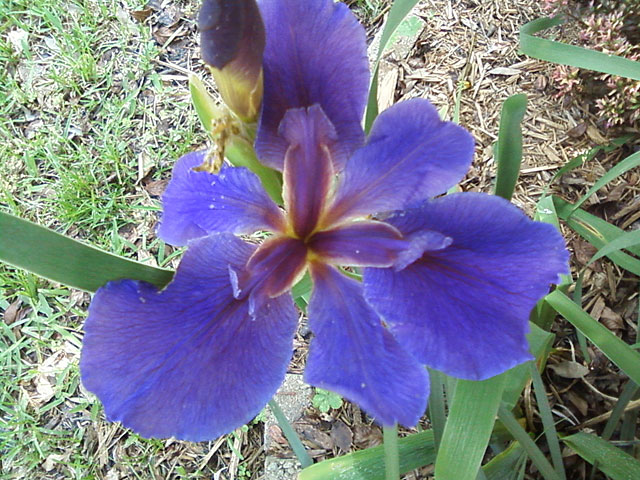
Iris-Blue Flago
Iris are available in a wide variety of flower colors, including pink, blue, red, yellow, and purple. They bloom in early summer, with some varieties reblooming later in the summer. They grow from 8 inches to 4 feet tall, depending on variety. The flowers are lovely in bouquets, and the foliage remains attractive even after flowers have faded. Unfortunately, the plants are susceptible to borers, so check the rhizomes (fleshy roots) yearly for holes, discarding any infested ones.
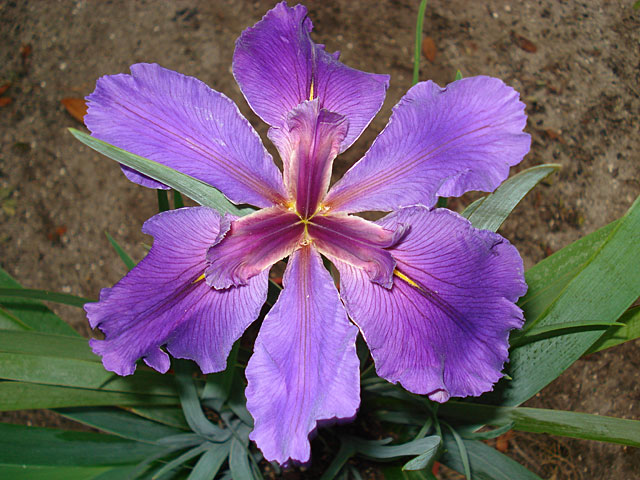
Iris-Purple
Iris are available in a wide variety of flower colors, including pink, blue, red, yellow, and purple. They bloom in early summer, with some varieties reblooming later in the summer. They grow from 8 inches to 4 feet tall, depending on variety. The flowers are lovely in bouquets, and the foliage remains attractive even after flowers have faded. Unfortunately, the plants are susceptible to borers, so check the rhizomes (fleshy roots) yearly for holes, discarding any infested ones.

Iris-Yellow
Iris are available in a wide variety of flower colors, including pink, blue, red, yellow, and purple. They bloom in early summer, with some varieties reblooming later in the summer. They grow from 8 inches to 4 feet tall, depending on variety. The flowers are lovely in bouquets, and the foliage remains attractive even after flowers have faded. Unfortunately, the plants are susceptible to borers, so check the rhizomes (fleshy roots) yearly for holes, discarding any infested ones.
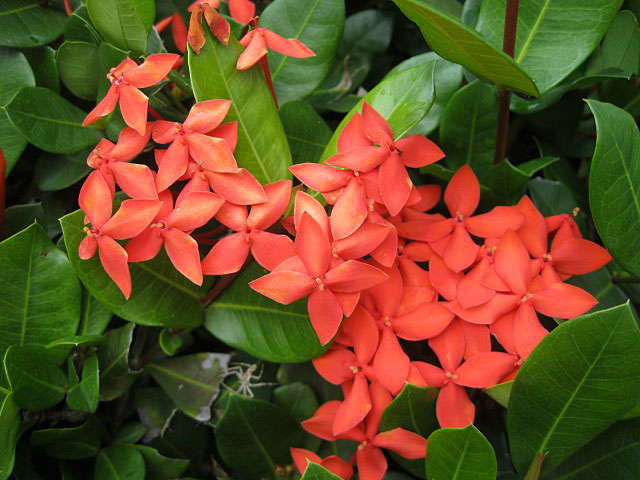
Ixora-Coccinea
A beautiful and attractive tropical flowering shrub that blooms all year round. A hardy plant that comes in varying shapes, sizes and vibrant colors. It has been and continues to be an all time favorite with home gardeners and landscapers in the tropical and sub-tropical regions worldwide.
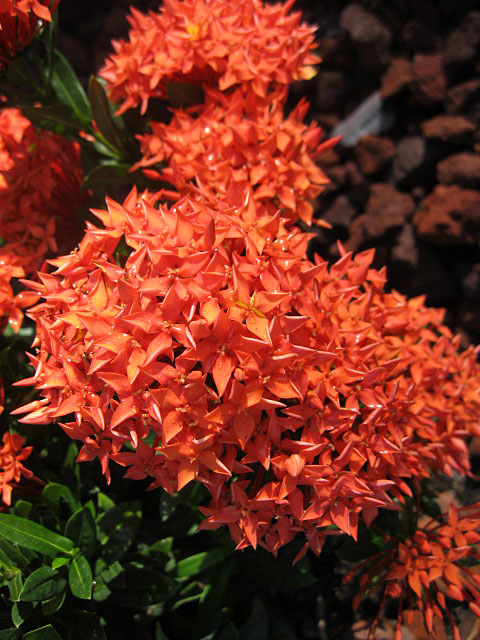
Ixora-Dwarf Red
A beautiful and attractive tropical flowering shrub that blooms all year round. A hardy plant that comes in varying shapes, sizes and vibrant colors. It has been and continues to be an all time favorite with home gardeners and landscapers in the tropical and sub-tropical regions worldwide.
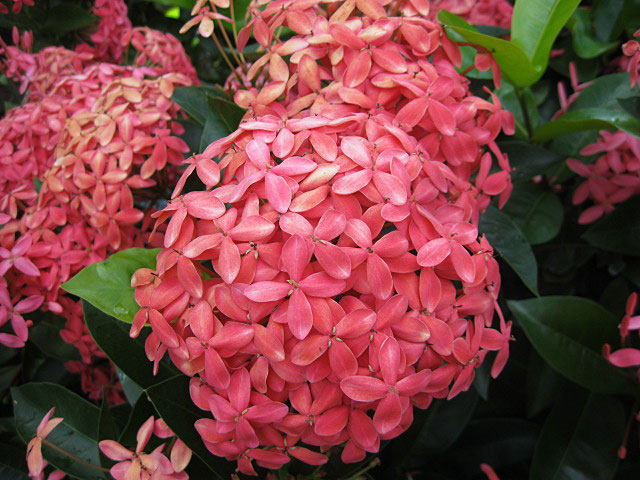
Ixora-Nora Grant
A beautiful and attractive tropical flowering shrub that blooms all year round. A hardy plant that comes in varying shapes, sizes and vibrant colors. It has been and continues to be an all time favorite with home gardeners and landscapers in the tropical and sub-tropical regions worldwide.
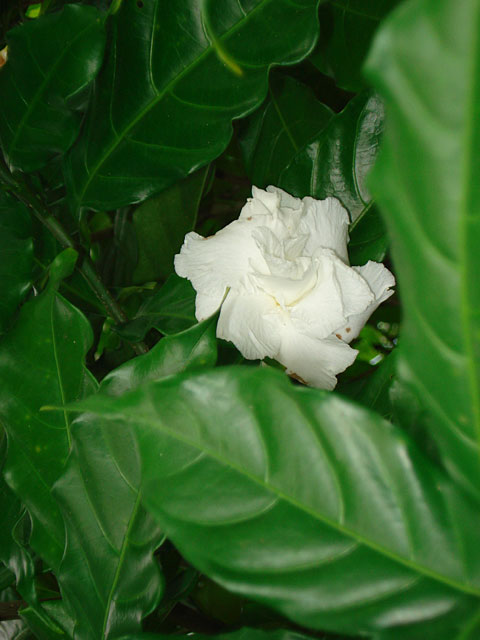
Jasmine Cape
Cape Jasmine is an evergreen shrub that are highly prized for their profusion of sweetly fragrant double white blooms. Growing to a height of 4 to 6 feet and equal spread in the garden (smaller in containers), many would argue that there are few shrubs so perfect in their properties as a well grown Gardenia. With its low, dense growth, upright habit and its gorgeous bright green glossy leaves, Gardenia is a very attractive evergreen container plant or garden specimen. The real prize of this plant are its highly fragrant 4 inch double white blooms which turn to creamy yellow as they age. These open over a long period of time, from May through July and make great long lasting cut flowers. Inside they have a powerful, sweet fragrance, and can perfume an entire room. Outside, grow near a patio or in outdoor living area where the fragrance can be enjoyed.
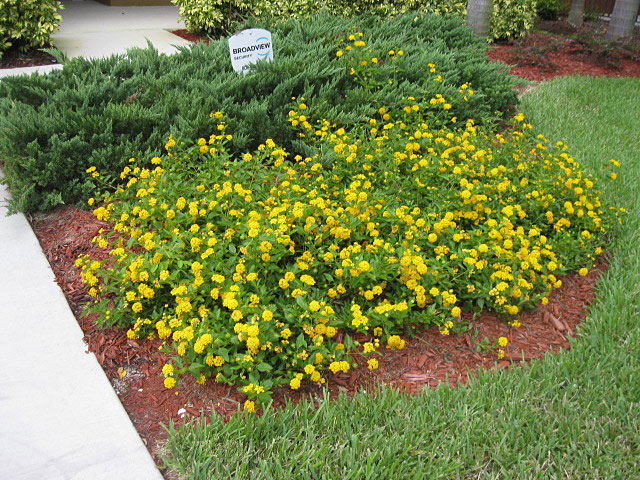
Lantana-Gold
Drought tolerant, heat loving, low maintenance annual with a wealth of golden yellow flowers. Reduced fruit set promotes prolific blooming spring till frost. Deer tolerant. A very adaptable and popular annual.
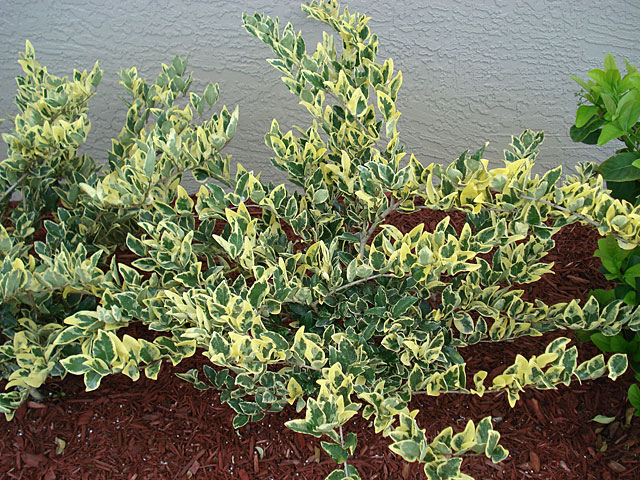
Ligustrum-Jack Frost
A very striking evergreen shrub that makes a wonderful hedge, and looks equally as nice all by itself as an accent planting. Very disease resistant, and thrives in a wide variety of soil conditions. Large glossy leaves are 1 1/2 inch-2 inch long and at least 1 inch wide - leaf color is medium green with creamy white variegated margins. Moderate growth - takes either full sun or part shade.
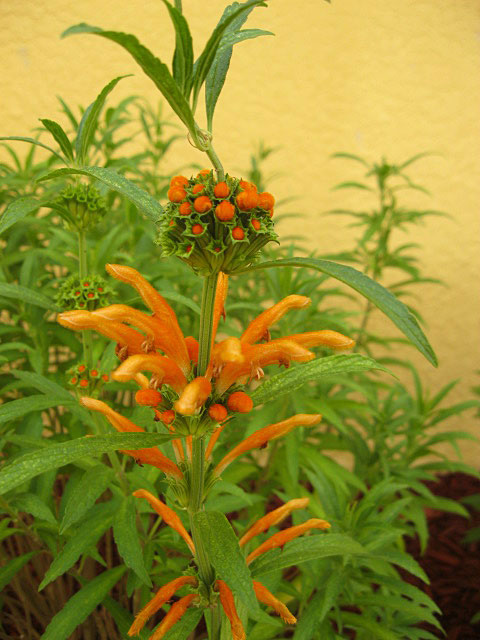
Lion's Tail
Lion's Tail is a striking, orange, autumn blooming perennial. It is particularly gorgeous when planted in front of Mexican Bush Sage, Salvia leucantha. The flowers of the Lion's Tail dry very well and can keep their color for two years or more.

Liriope-Evergreen Giant
A popular border and edging plant that looks great in tubs, rows, as a border or mass planted under taller shrubs or trees. Stiff, textured 3/8 inch - 1/2 inch wide leaf blades. White to pale purple flower spikes appear in summer and last well into autumn.
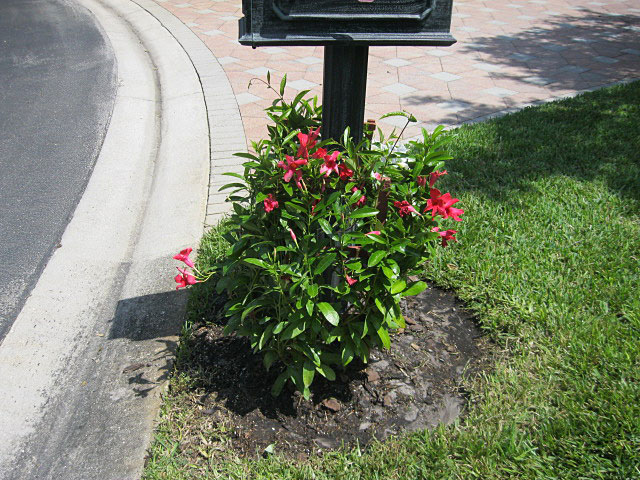
Mandivilla-Red
Evergreen vine with brilliant, hot pink trumpet-shaped flowers appearing in summer. Use on a trellis or grow in a container. Requires partial shade, but can tolerate full sun in coastal areas. Regular watering is required until fully established, otherwise prefers average to dry conditions during growing season. Regular fertilization schedule throughout the growing season is recommended. Pruning controls shape and form.
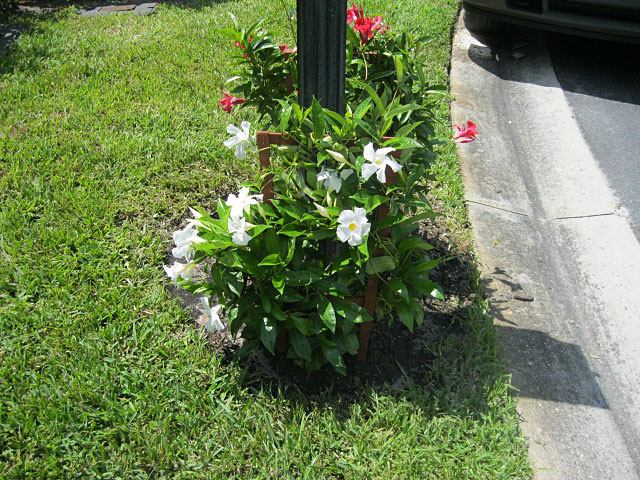
Mandivilla-White
Evergreen vine with brilliant, hot pink trumpet-shaped flowers appearing in summer. Use on a trellis or grow in a container. Requires partial shade, but can tolerate full sun in coastal areas. Regular watering is required until fully established, otherwise prefers average to dry conditions during growing season. Regular fertilization schedule throughout the growing season is recommended. Pruning controls shape and form.
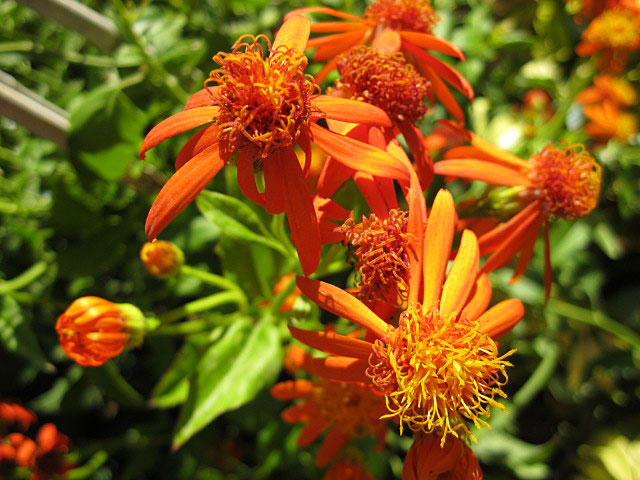
Mexican Flame Vine
This vine features dense arrowhead-shaped, serrated leaves that provide a thick, deep green background for the plant’s summer flowers. The daisy-like blooms begin in a brilliant orange and, as the summer weather grows hot, they deepen into a striking orange-red color. The fruits are reminiscent of a dandelion’s seed-head. The Mexican Flame Vine usually does not exceed 10 feet in length.
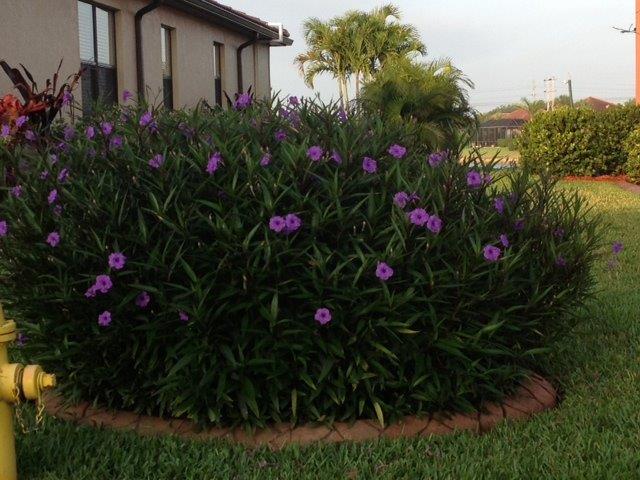
Mexican Petunia
Mexican petunia is a stalk forming perennial that stands up to 3 feet in height. Leaves are dark green; oppositely arranged and lance-shaped, roughly 6-12 inches long and 1/2-3/4 inches wide. Veins are prominent on the underside of the leaf. Leaf margins are can be smooth or wavy. Foliage appears a metallic blue/purple under full sun. Flowers are trumpet shaped (1 1/2 -2 inches in diameter), solitary or borne in clusters at the tips of the stems. There are numerous varieties with a plethora of color to choose from (white, pink, and many shades of blue). Dwarf varieties are also available.
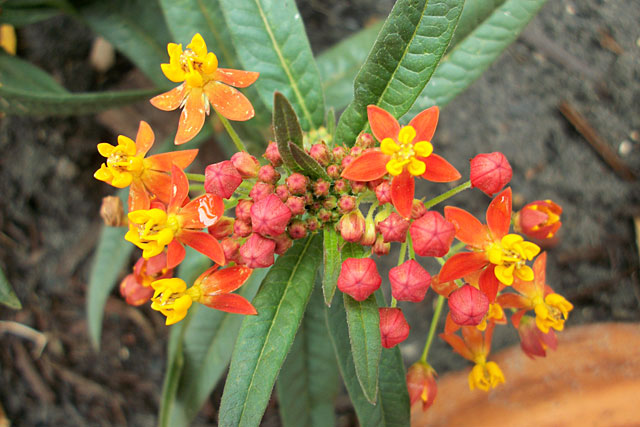
Milkweed-Scarlet
Scarlet Milkweed, Florida milkweed, yellow milkweed, This is a yellow sport of the normal Scarlet Milkweed and is a must for any Buterfly garden if you want to feed the larvae of the Monarch Butterfly. When larvae strip the leaves from this plant or when it gets too leggy for your garden area you can easily prune it back for a denser regrowth. This plant is quite hardy and rebounds quickly from freszes and frost.
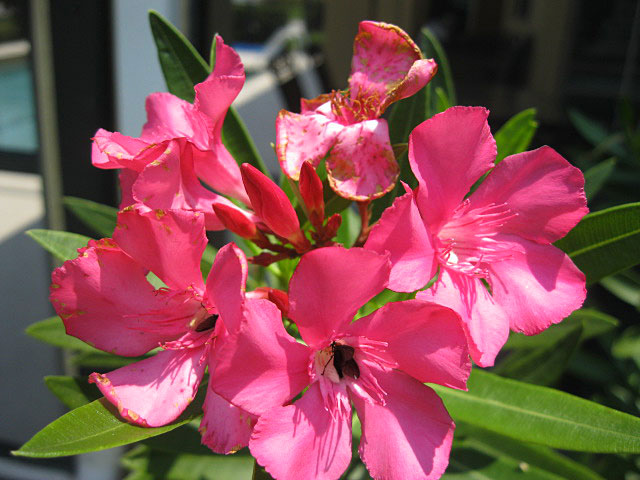
Oleander-Claypso
Oleander is a tough Mediterranean shrub that thrives where summers are dry and hot. It is a large, evergreen shrub with bushy, rounded to vase-shaped habit. Leathery, linear, lance-shaped leaves line the branches throughout the year and emit white latex when broken. The colorful flowers appear all year around but bloom most heavily from late winter to early summer. They are borne in loose clusters at the ends of the branches and are funnel-shaped at the base with five prominent radial petals that flare at the mouth.
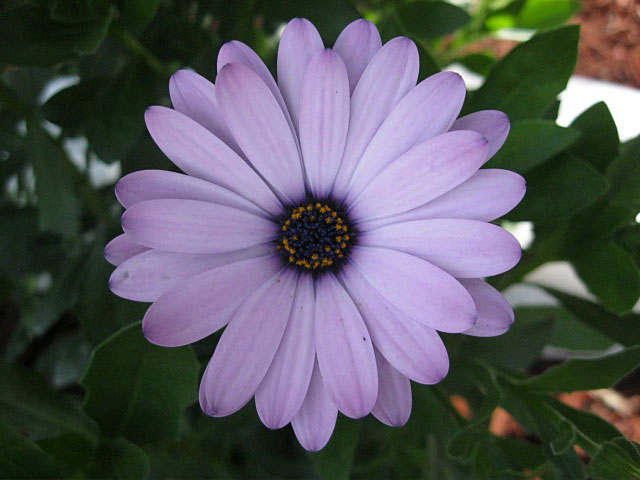
Osteospermum-African Daisy
Osteospermums are lovely daisy-like plants that originate in South Africa. They were virtually unknown as a landscape plant 25 years ago, but are becoming more popular as people discover these cheerful flowers. They brighten up borders and containers wherever they are grown.
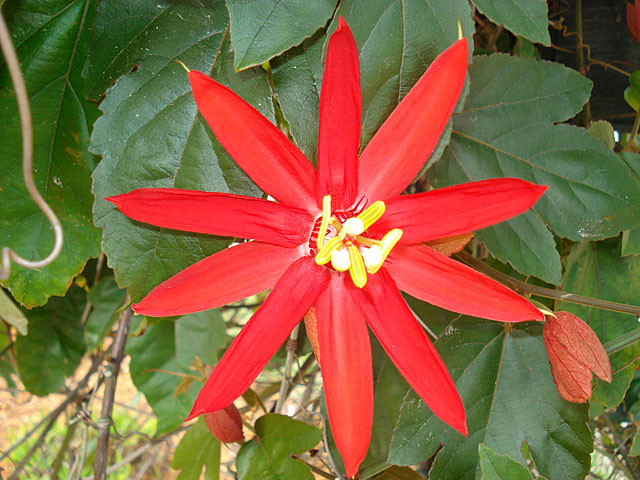
Passion Vine-Red
Dramatic flowers in red with purple and white centers create a gorgeous display all summer. Perfect for hanging baskets and patio containers that can be moved indoors for winter in northern zones. In the South, grow the vines year-round on fences or pergolas.
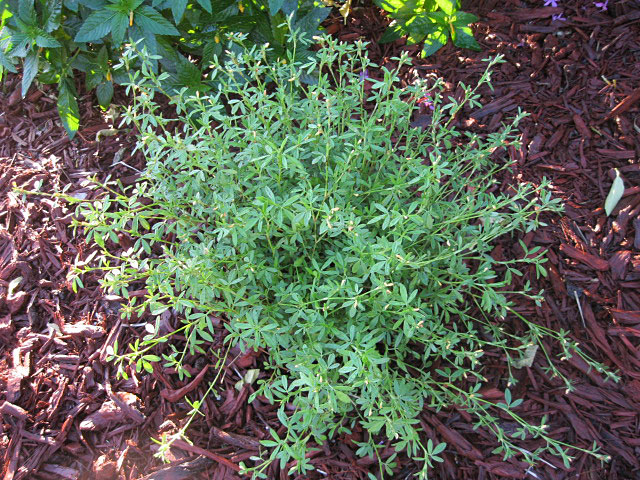
Pencil Flower
The unusual and exotic pencil cactus plant is very easy to grow as long as it receives sufficient light. The plant is a mass of pencil thick shiny green stems which jut from the thicker main stems at every conceivable angle. Tiny leaves will sometimes appear along the stems.
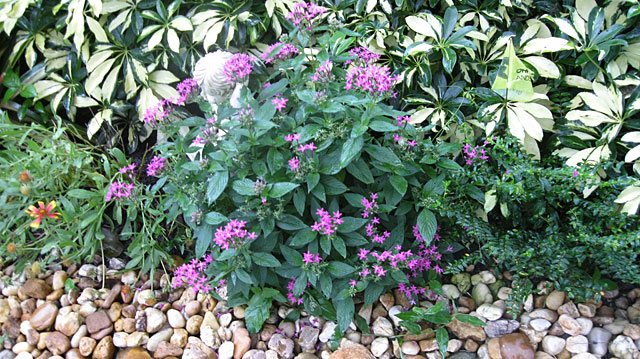
Penta-Purple
The Penta lanceolata, commonly known as the starflower, has lance-shaped leaves with a plethora of vivid, five-petaled flowers. The flowers can be red, white, pink, lavender, and purple. A tropical plant, pentas are tolerant to high heat and enjoy daily or twice-daily watering. Pentas grow well in a garden or in containers, and they attract butterflies and hummingbirds. The large variety of pentas allows a gardener to explore a wide range of colors and arrangements.
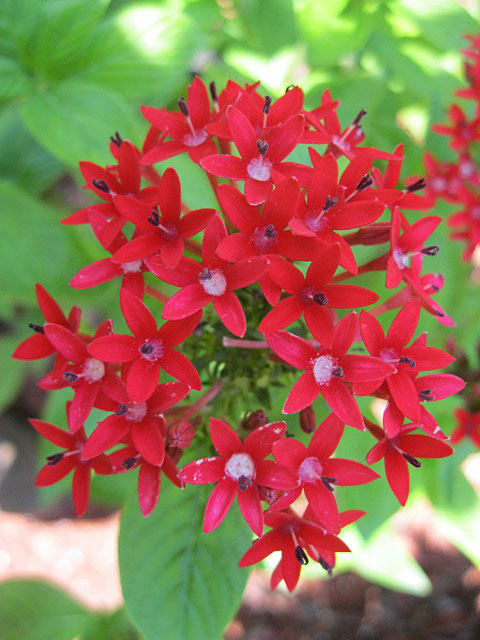
Penta-Red
The Penta lanceolata, commonly known as the starflower, has lance-shaped leaves with a plethora of vivid, five-petaled flowers. The flowers can be red, white, pink, lavender, and purple. A tropical plant, pentas are tolerant to high heat and enjoy daily or twice-daily watering. Pentas grow well in a garden or in containers, and they attract butterflies and hummingbirds. The large variety of pentas allows a gardener to explore a wide range of colors and arrangements.
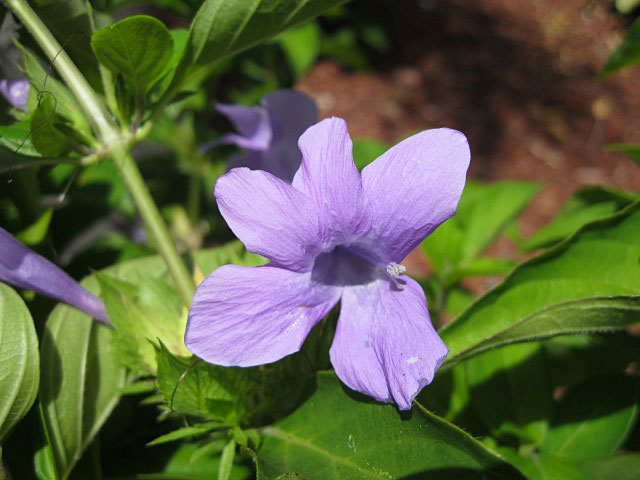
Phillipine-Violet
Philippine Violet is a root hardy perennial that forms an attractive upright shrub reaching about 3 feet tall. The dark green foliage is very attractive and virtually pest and disease free. However in late summer to fall the real show begins as the upright plant stems load up with an abundance of blue flowers. A white blooming form is also available. Keep the soil moderately moist and mulch plants well to protect them over the winter. This plant is currently underutilized but sure to grow in popularity fast!
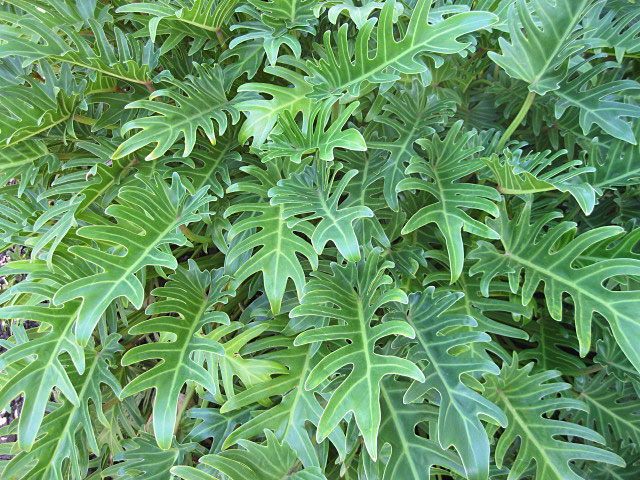
Philodendrum-Xanadu
Philodendron 'xanadu' is a beautiful foliage plant which can be kept in bright rooms with direct or indirect light. This plant grows very compact and in the shape of a mushroom cap. Unmatched by any other big-leafed tropical, this foliage plant plays an important role in creating jungle-like exotic compositions in warm winter gardens. With its lax habit and tolerance of both sun and considerable shade, it works in foundation plantings under shade arbors, as a focal point of sequestered entries or as a standout against hot-colored walls of postmodern architecture. Will grow quite well in large containers.
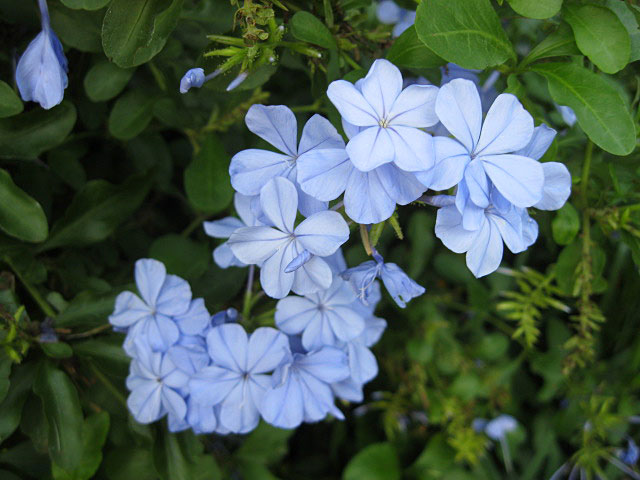
Plumbago-Blue
Also called African Lily or Lily of the Nile, this true lily is native to Africa. Produces clumps of long, shiny, strap-like leaves with spectacular flower clusters (6 to 12 in. across) which are white to dark blue in color. Blooms in late spring into the early fall and prefers full sun but can handle some afternoon shading. Flowers are fragrant which attract pollinating insects. Suitable for growing in the garden or as a potted house plant. Be careful handling this plant since it can cause irritation to the skin. Is moderately tolerant to frost.
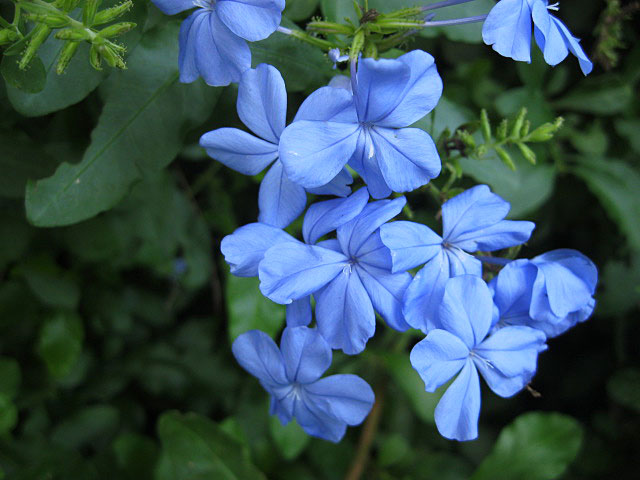
Plumbago-Imperial Blue
Also called African Lily or Lily of the Nile, this true lily is native to Africa. Produces clumps of long, shiny, strap-like leaves with spectacular flower clusters (6 to 12 in. across) which are white to dark blue in color. Blooms in late spring into the early fall and prefers full sun but can handle some afternoon shading. Flowers are fragrant which attract pollinating insects. Suitable for growing in the garden or as a potted house plant. Be careful handling this plant since it can cause irritation to the skin. Is moderately tolerant to frost.
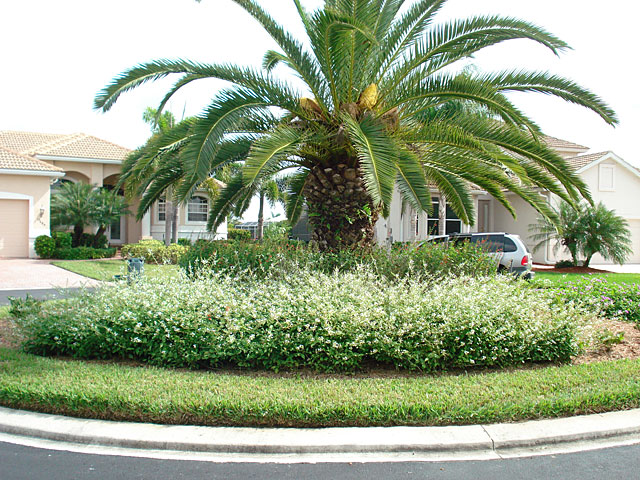
Plumbago-White
Also called African Lily or Lily of the Nile, this true lily is native to Africa. Produces clumps of long, shiny, strap-like leaves with spectacular flower clusters (6 to 12 in. across) which are white to dark blue in color. Blooms in late spring into the early fall and prefers full sun but can handle some afternoon shading. Flowers are fragrant which attract pollinating insects. Suitable for growing in the garden or as a potted house plant. Be careful handling this plant since it can cause irritation to the skin. Is moderately tolerant to frost.
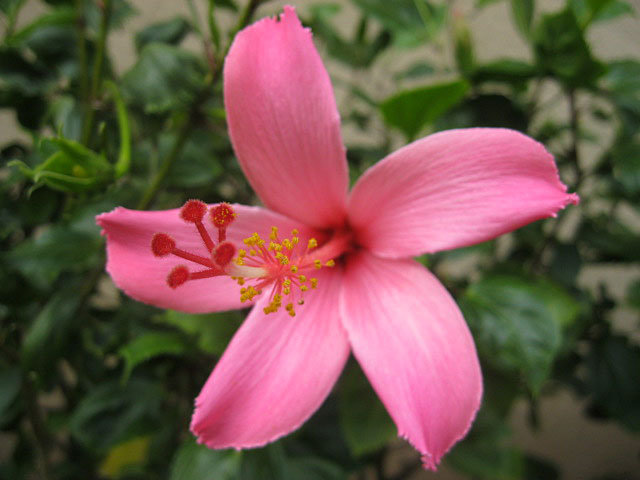
Plumeria-Frangipani Pink
Frangipani flowers are each made up of 5 overlapping petals. The waxy blooms are about 2 in (5 cm) wide and are available in many shades of pink, red, yellow or white -- or any combination.
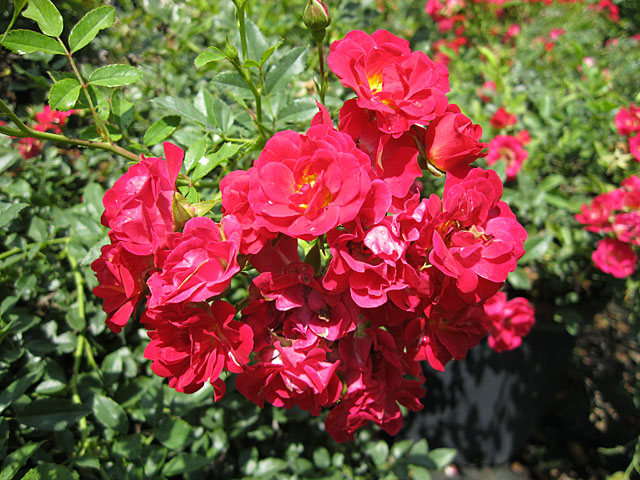
Rose-Knock Out
Knock Out is a compact, tidy shrub rose and resistant to black-spot. Blooms are fire engine red in cool weather and a cherry red in the summer months. The foliage is a dark purplish green and turns to burgundy in the fall. Tough foliage and blooms. Knock Out™ is drought tolerant and If left un-pruned, The Knock Out Family of Roses can easily grow to be more than 3-4' wide x 3-4' tall. Periodic trims will keep them maintained at a smaller size. A once a year cut (to about 12-18 inches above the ground) in early spring (after the last hard frost) is also recommended for maximum performance.
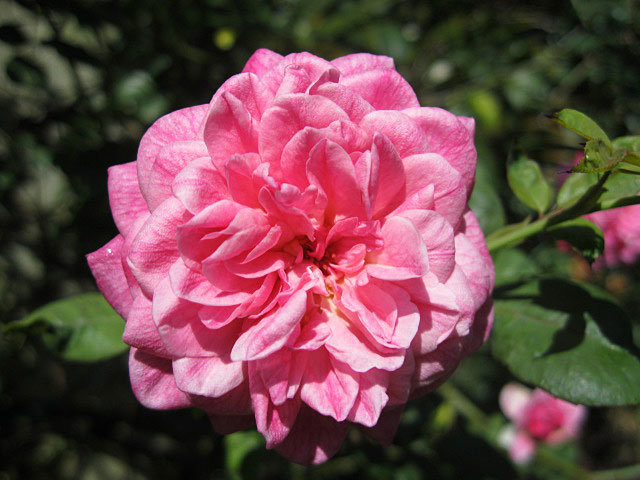
Rose-Knock Out Pink
Knock Out is a compact, tidy shrub rose and resistant to black-spot. Blooms are fire engine red in cool weather and a cherry red in the summer months. The foliage is a dark purplish green and turns to burgundy in the fall. Tough foliage and blooms. Knock Out™ is drought tolerant and If left un-pruned, The Knock Out Family of Roses can easily grow to be more than 3-4' wide x 3-4' tall. Periodic trims will keep them maintained at a smaller size. A once a year cut (to about 12-18 inches above the ground) in early spring (after the last hard frost) is also recommended for maximum performance.
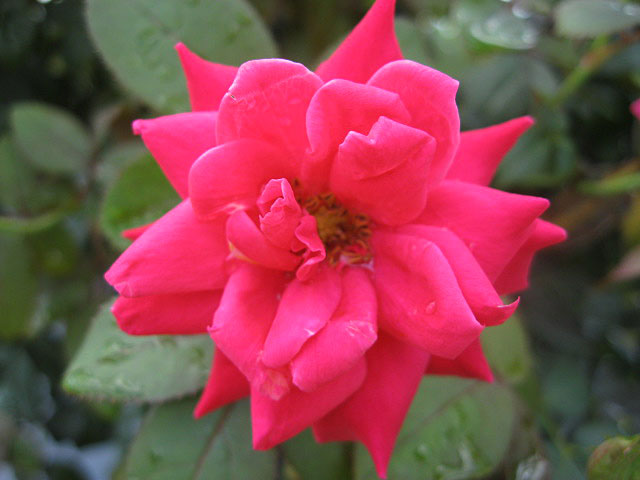
Rose-Knock Out Red
Knock Out is a compact, tidy shrub rose and resistant to black-spot. Blooms are fire engine red in cool weather and a cherry red in the summer months. The foliage is a dark purplish green and turns to burgundy in the fall. Tough foliage and blooms. Knock Out™ is drought tolerant and If left un-pruned, The Knock Out Family of Roses can easily grow to be more than 3-4' wide x 3-4' tall. Periodic trims will keep them maintained at a smaller size. A once a year cut (to about 12-18 inches above the ground) in early spring (after the last hard frost) is also recommended for maximum performance.
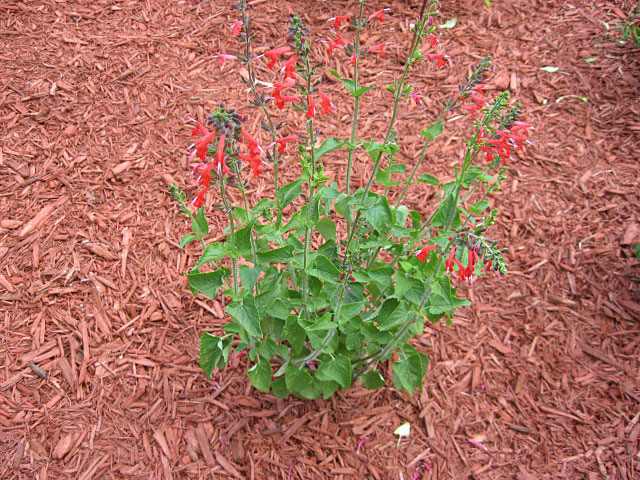
Salvia-Coccinea
Perennial salvia flowers come in a wide range of colors including, red, pink, salmon, coral, orange, yellow, purple, blue, white and everything in between. There are dozens of perennial salvia cultivars to choose from, each with a slightly different flower color. Perennial salvia leaves are generally green but some cultivars have attractive silver leaves that are covered with tiny hairs. Salvia flowers attract hummingbirds to the garden but repel deer.
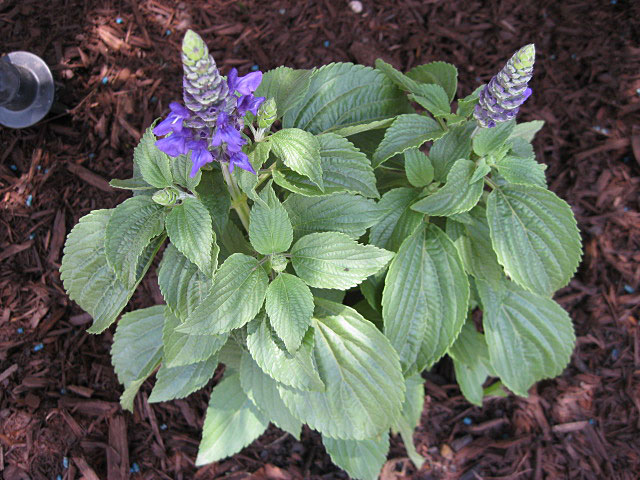
Salvia-Mystic Spires
Perennial salvia flowers come in a wide range of colors including, red, pink, salmon, coral, orange, yellow, purple, blue, white and everything in between. There are dozens of perennial salvia cultivars to choose from, each with a slightly different flower color. Perennial salvia leaves are generally green but some cultivars have attractive silver leaves that are covered with tiny hairs. Salvia flowers attract hummingbirds to the garden but repel deer.
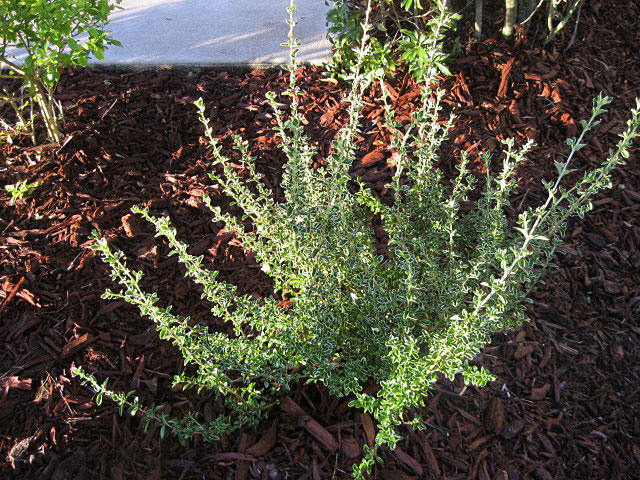
Serrisa
Serissa are a nice addition to any collection due to their ability to bloom on and off throughtout the year. There are many different varieties including Snow Rose Serissa, Japanese White Serissa, Japanese Pink Serissa, Variegated Serissa, and Chinese Serissa, to name a few. Serissa are subtropical plants that grow well indoors. With a few simple guidelines your Serissa bonsai can be grown without difficulty.
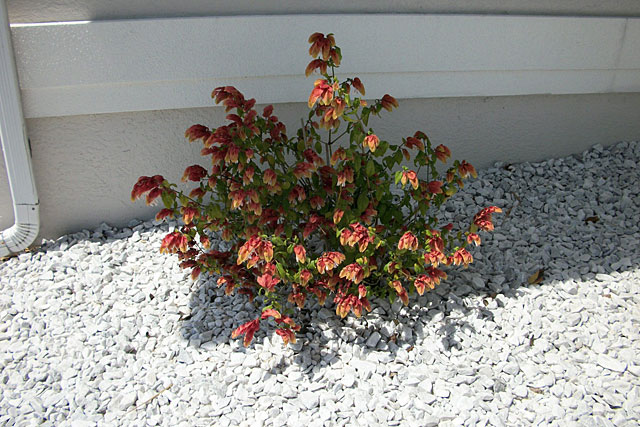
Shrimp Plant
The shrimp plant is a flower that was given its name because many people think it looks like a shrimp. This plant will grow very well in drought conditions and does not need to be moved out of full sunlight. It is very easy to care for and is enjoyed by many people who love house plants because of this.
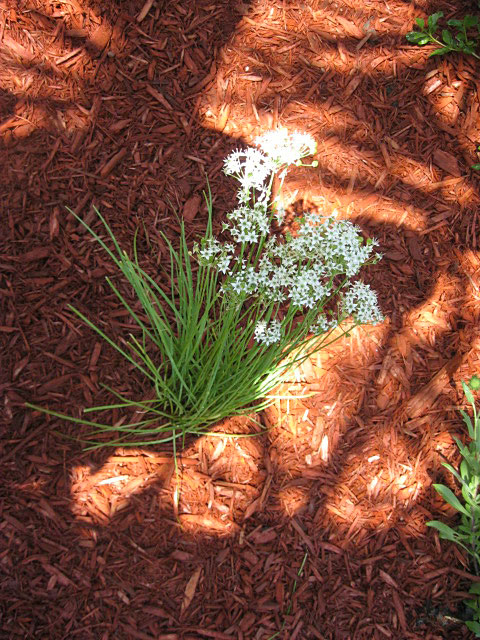
Society Garlic-White
This cold-hardy, evergreen Allium grows about 12 inches tall on sunny, well-drained sites, where it flowers almost year-round. Unfortunately, this grassy-leaved plant, unlike the more common lavender-flowered society garlic, self-sows so aggressively that its use is impractical in most landscapes.

Staghorn Fern
Like orchids, staghorn ferns (from the genus platycerium) were once considered exceedingly difficult, but are now fairly common. There are 17 species of platycerium, but only one (the bifurcatum) is truly common. These ferns are epiphytic, which means they grow mounted on plaques or other substrates. They have two distinct leaf forms. Small, flat leaves cover the root structure and take up water and nutrients. Green, pronged fronds emerge from this base. These fronds can reach 3 feet in length. In certain circles, platycerium varieties are intensely sought-after collector's plants.
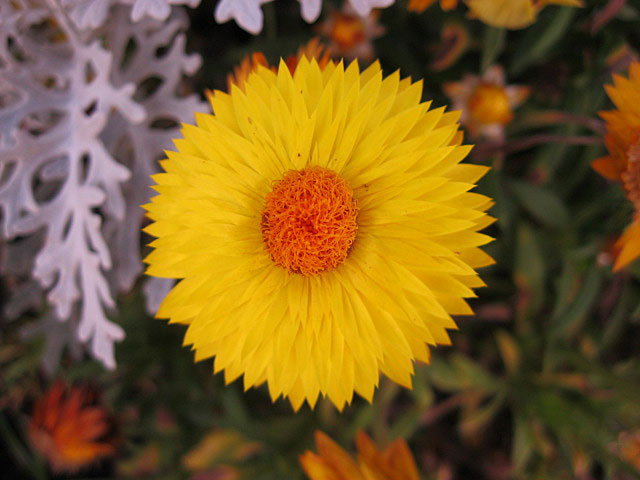
Strawflower
Strawflowers grow two to three feet tall. Dwarf varieties grow just 18 inches - 20 inches tall. Daisy-like flowers are 2-3 inches in diameter Colors include in yellow, orange, red, rose, white, and pink. Flowers bloom from mid summer, right up to frost.
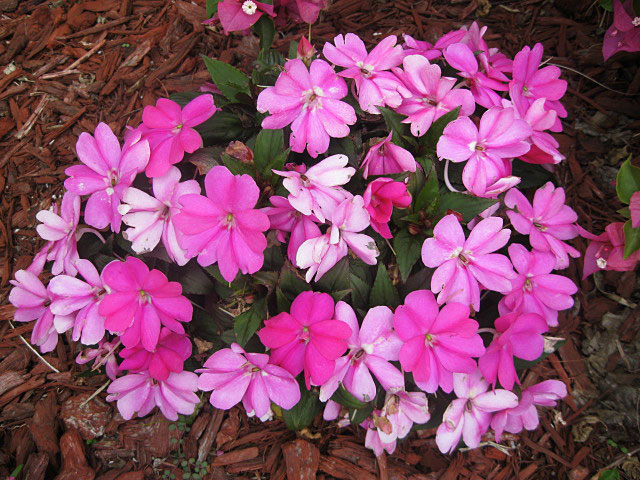
Sunpatiens-Lavender
SunPatiens are as easy to care for as they are beautiful. Like most Impatiens, SunPatiens should be well watered. Plant them in a well draining soil with plenty of organic material. Always, mulch your beds with 2 to 3 inches of mulch to help retain moisture and protect the roots. Apply a timed release fertilizer at planting, therefore, you will be fertilizing with each watering.
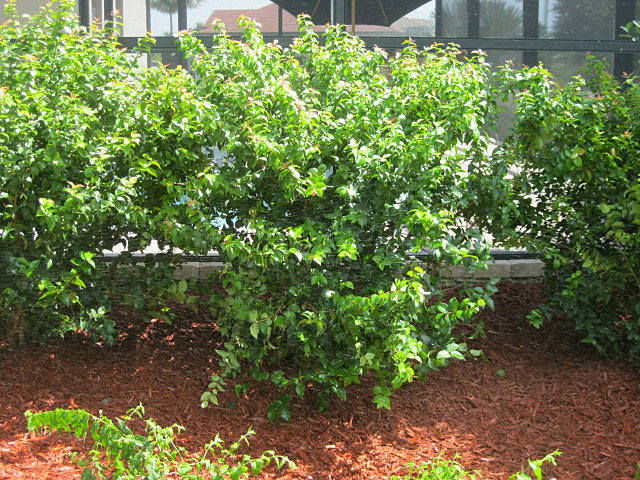
Surinam-Cherry
The Surinam cherry is a bush or small tree to 25ft in height. Plants can be trained as small bushes or hedge but can take on a more tree-like growth pattern. Flowering may occur several times a year, with a single moderate sized tree having thousands of flowers. Fruiting is generally profuse with hundreds or thousands of fruits per cycle and trees sometimes fruiting 2-3 times a year. There are some named varieties with most bearing red fruits. There are also lesser known, black ripening types.
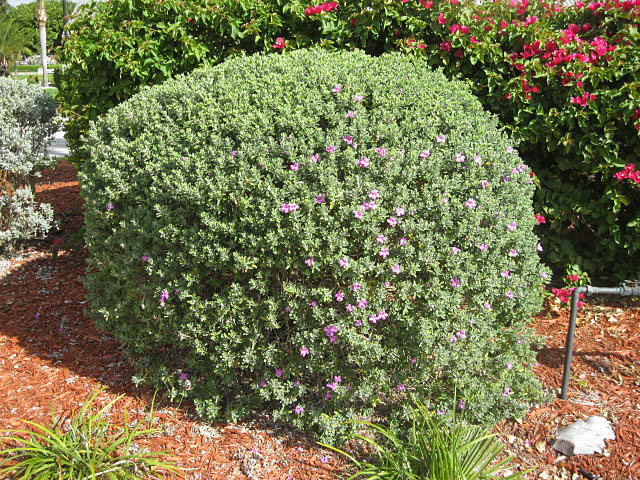
Texas Sage Bush
The Texas sage is sometimes referred to in Phoenix as the purple sage. The Texas sage is one of several desert plants that we recommend for people who want desert plants that are perennial (you need to plant them only once), hardy, low care, relatively drought resistant, easy to find, pretty cheap to buy, and provide lovely color many times during the year.
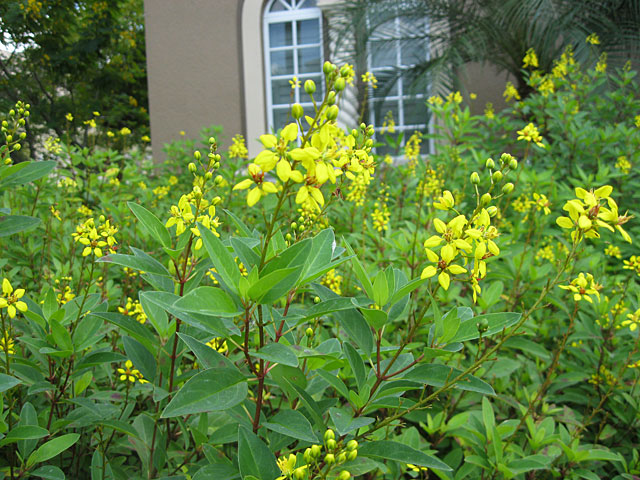
Thryallis
This compact upright rounded, evergreen shrub is covered during most of the year with small. very showy, yellow flowers. The loose, open natural growth habit is ideal for informal plantings but it will need some pruning to keep from being too leggy. It can be sheared into a more formal hedge and can he used for topicary. but some flowers will be trimmed of at each pruning. Sheared plants often thin out at the bottom. To help prevent this, keep the bottom of a hedge slightly wider than the top to allow sunlight to reach the lower foliage.
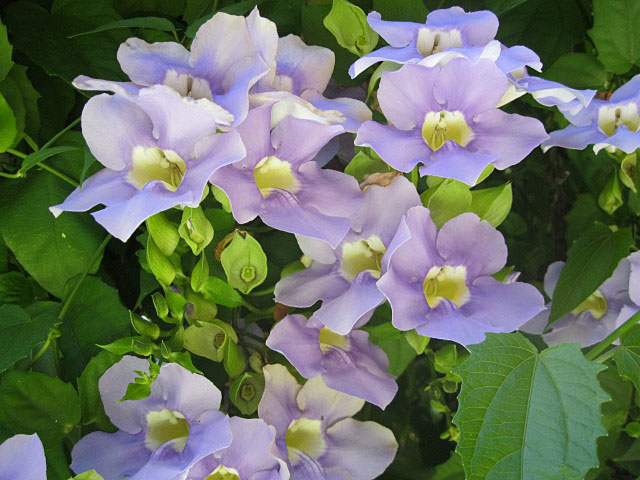
Thunbergia-Sky Vine
These tender vines are natives of tropical Africa, South Africa, tropical Asia and India. These plants are usually treated as annuals, though they will behave as perennials in mild climates. They will grow 3 to 15 feet long. The ovate to triangular leaves grow up to 4 inches long and they produce flowers that may grow solitary or in clusters. They look like flaring tubes, 1 to 2 inches across. They may be orange, yellow, or white, with or without a brownish-purple eye.

Thunbergia-Sky Vine
These tender vines are natives of tropical Africa, South Africa, tropical Asia and India. These plants are usually treated as annuals, though they will behave as perennials in mild climates. They will grow 3 to 15 feet long. The ovate to triangular leaves grow up to 4 inches long and they produce flowers that may grow solitary or in clusters. They look like flaring tubes, 1 to 2 inches across. They may be orange, yellow, or white, with or without a brownish-purple eye.
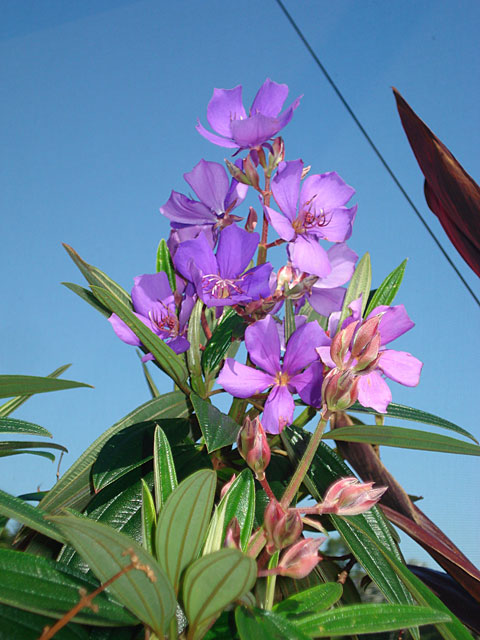
Tibouchina
A native of Brazil, princess flower (Tibouchina urvilleana) is a glorious addition to tropical and sub-tropical gardens. Its large purple flowers and soft hairy leaves add interest and a burst of color to any landscape. It can also can be used as an indoor container plant in cooler regions, if full light and warmth is provided. Though it is usually a shrub here, it sometimes becomes large enough to form a small ornamental tree.

Vinca-Apricot
Annual vinca is a small bush-like plant 10 to 18 inches tall with multiple stems. It is perennial only in regions where there is no frost. Since it originated on the tropical island of Madagascar, it is sometimes called Madagascar Periwinkle.
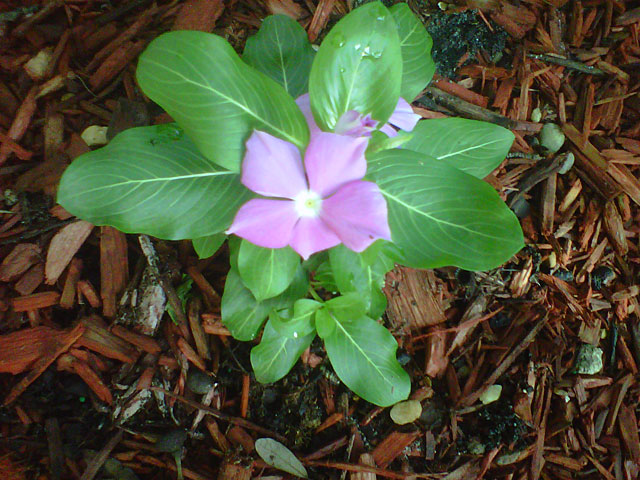
Vinca-Lavender
Annual vinca is a small bush-like plant 10 to 18 inches tall with multiple stems. It is perennial only in regions where there is no frost. Since it originated on the tropical island of Madagascar, it is sometimes called Madagascar Periwinkle.
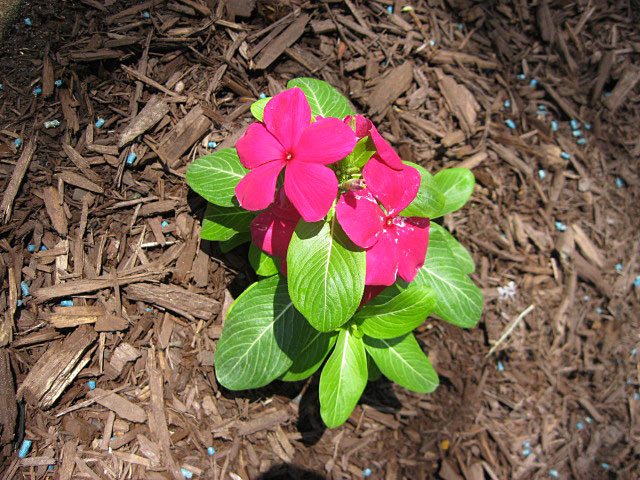
Vinca-Magenta
Annual vinca is a small bush-like plant 10 to 18 inches tall with multiple stems. It is perennial only in regions where there is no frost. Since it originated on the tropical island of Madagascar, it is sometimes called Madagascar Periwinkle.
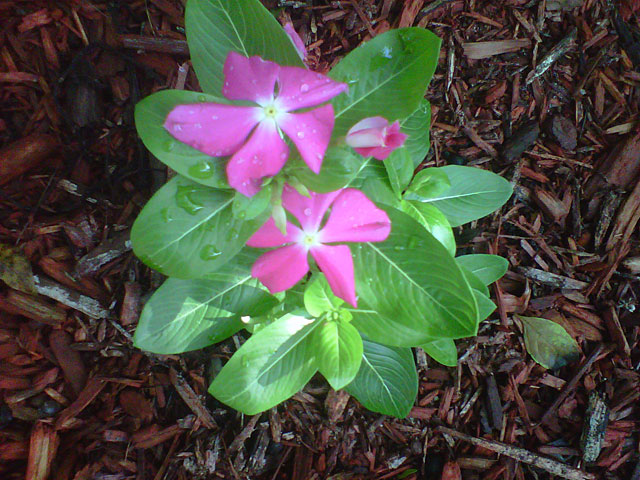
Vinca-Pink
Annual vinca is a small bush-like plant 10 to 18 inches tall with multiple stems. It is perennial only in regions where there is no frost. Since it originated on the tropical island of Madagascar, it is sometimes called Madagascar Periwinkle.
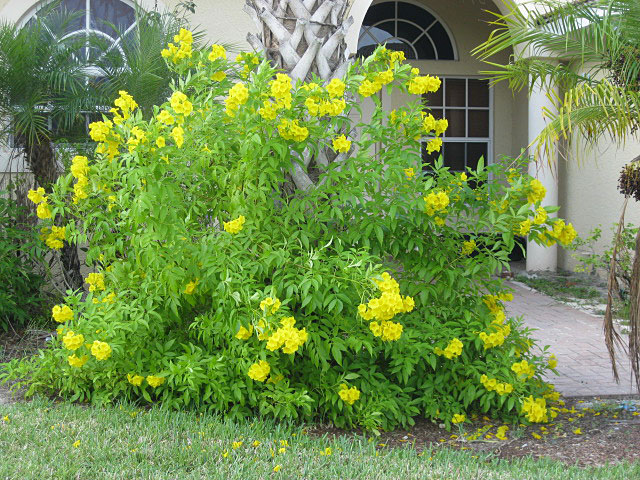
Yellow Elder
Yellow elder is an evergreen bushy shrub growing up to 22 feet tall with a light grey bark and bright green pinnate serrated leaves. It has yellow, trumpet shaped fragrant flowers; they bloom from May to October. A profuse bloomer, the panicles on which the flowers are borne can produce more than 50 blossoms! This plant attracts butterflies. It has plant has 5 - 8 long seedpods, hanging in clusters. The seeds, dispersed when the pods split open, are flat, oblong with transparent wings on the ends.
SCHEDULE ONLINE NOW WITH OUR LANDSCAPING SERVICES IN FORT MYERS!
